Have you ever taken your car in for a routine oil change and been told that you need to replace a bunch of other parts, too, that will cost more than the car is worth? It’s frustrating, especially when it seems like your mechanic is just trying to make extra money off of you. But sometimes, it turns out, the mechanic is right – your car really isn’t worth the money.
Just like people, cars have a price tag that corresponds with their quality. It’s always exciting to find a great car deal, but not all cars are worth the money. Lucky for you, mechanics have revealed the worst cars on the market that aren’t worth your time or money. So before you hit the car lot, be sure to check out this list!
Toyota Land Cruiser

As a result of poor sales in the United States, the Toyota Land Cruiser was discontinued in the rest of the world. Despite the fact that the 2016 Land Cruiser model was classified as the “worst” of the bunch by WVDot, the Land Cruiser has a reputation for being a trustworthy off-roader. According to Motor Biscuit, the 2016 Land Cruiser was the model with the “most problematic” issues.
The transmission had a jerky shifting pattern at low speeds, the brakes were problematic, and there were problems with the air conditioning system. These were the “most obvious” concerns. In contrast to previous years, the 2016 Land Cruiser is a standout.
Acura Integra GS-R

Because of its engine, the Acura Integra Grand Sport Racing (GS-R) was unique. Under the hood was a B18C1 DOHC VTEC engine that produced 170 horsepower at 8,000 revolutions per minute. This ability differentiates it from other models in the market. The GS-top R’s speed of 135 miles per hour was another feature that appealed to prospective purchasers.
According to RepairPal, the 2001 Integra appeared to have problems, with the engine being the most common of the troublesome parts. In addition to the frequent need to repair the engine coil, oil leaks were the primary cause of the “CHECK ENGINE” warning light coming on. Additionally, there were reports from a few consumers that the engine made a grinding noise.
Kia Rio

The Kia Rio’s choppy ride, ABS light, engine misfire, gasoline leak, and extreme vibration were highlighted by Breaker Yard. According to RepairPal, Rio has a dependability rating of 4 out of 5, which is average for its class. However, later models are superior to newer ones because the later ones have received higher scores.
Car and Driver gave the 2022 Kia Rio a 9/10, which is a significant improvement over previous models. With an MSRP starting at around $16,250, the Rio is a great value. The vehicle’s mileage on a single tank of gas is another significant selling point, particularly in this day and age. The 2022 Kia Rio achieves a combined 33/41 MPG. Buy a newer model if this is the automobile you want to buy.
Chevrolet Camaro

The Chevy Camaro epitomizes the best of the old-school muscle cars. Although the 2014 Camaro received a poor rating from J.D. Power, the 2010-2012, 2020- and 2021 Camaros were ranked as the best models. There were some engine and interior issues with the Camaro, which ranked it 20th out of 40 models.
Owners of Camaros have reported a high number of “engine-related” complaints to the National Highway Traffic Safety Administration. In addition to engine surging and rough idling, customers have also complained about excessive oil consumption and unexpected acceleration, according to the Knight Law Group. Before you buy a Camaro, make sure you select the correct model year.
Hyundai Accent

Motor Biscuit referred to the Hyundai Accent as the “worst…car” produced by the brand and recommended that consumers “should never buy” one. Despite the fact that Motor Biscuit acknowledged that the Accent was not “technically a bad car,” they stated that it is “afloat” in a “sea” of subcompacts that are capable of “swimming…better” than it.
The 2012 Accent has a low owner satisfaction rating, so if you’re interested in this vehicle, you’ll want to steer clear of this year’s model. According to Motor Ask’s “Quality & Reliability Rating” scale, Accents will become more enjoyable to drive in their later years from 2019 onwards.
Dodge Journey

As soon as the Dodge Journey hit the market, it was widely panned for its shoddy build quality, lackluster handling, and questionable reliability. It was described as “awful” and “weak” by Motor Biscuit. According to US News and World Report, the Journey isn’t an ideal used “SUV” because it has a “cheap plastic” interior.
For a car claiming to be a midsize SUV, U.S. News called the third row’s crampedness and lack of cargo space “subpar”. In addition, the Journey lacks in the technological arena. It does not come equipped with Apple CarPlay, Android Auto, or any of the other advanced safety technology that is available in virtually all of the Journey’s competitors.
Chevrolet Spark

The “Critics’ Rating” for the 2022 Chevrolet Spark was given a score of 5.8 out of 10 by U.S. News. The publication also mentioned some negative aspects of the vehicle, including its cramped cabin, a limited number of safety features, and sluggish acceleration. This criticism of the Spark has been around for a few years because there haven’t been many major changes to the 2022 model.
According to Consumer Reports, the Spark’s MPG was deemed “not very frugal.” Spark’s steering is “oversensitive” and “too twitchy” on the highway (never a good place for anything in the car’s mechanisms to be “twitchy”) despite its “responsive” handling characteristics.
Nissan Versa

At least for certain model years, the Nissan Versa appears to be riddled with issues. According to Kelley Blue Book, buying a pre-owned Versa from any of the years 2009, 2012, or 2016 is a no-go. The Versa has its share of problems, according to Motor Verso. The exhaust system has failed, the hubcaps are unstable, and the engine and transmission are having issues.
Transmission problems were “riddled” throughout the 2012 Versa model year. There were over 800 complaints about Versa reliability on NissanProblems.com over fourteen model years, placing it twenty-first out of thirty Nissan models. The transmission was cited as the source of the vast majority of these grievances.
Kia Soul

Kia’s “lackluster performance,” issues with the rear seats not folding down, and the lack of all-wheel drive were all listed as reasons not to buy a 2021 Kia Soul by Car Buying Strategies. The website also mentioned that the Soul ought to have been a little more “upscale” given the price of the product.
A further factor that contributes to the car’s divisive reputation is its boxy exterior design. Even though there are those who adore it, there are also those who detest it. In spite of the fact that its exterior design has been criticized, Kia’s compact automobile, which resembles a box and is quite a bit smaller than most other vehicles on the market, has proven to be quite successful.
Nissan Sentra
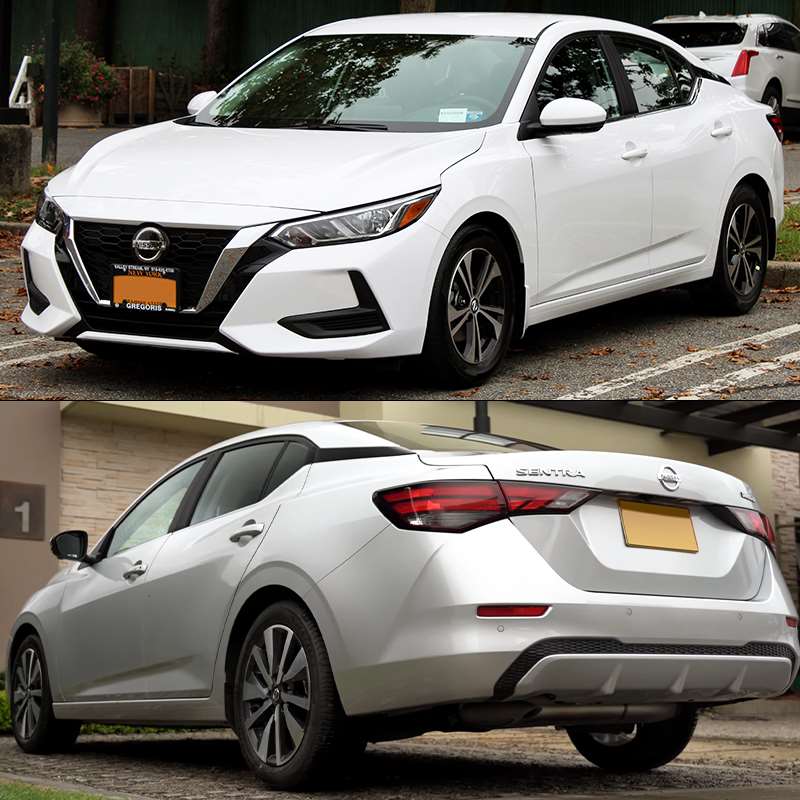
According to US News and World Report, the Nissan Sentra is a “good compact car” that offers good gas mileage and handling as well as a reasonable amount of power. However, the “sportiness” of the Sentra was criticized by the publication. Competitors’ “more intuitive infotainment systems” are another selling point for Sentra. In addition, Nissan is being sued.
The poor cooling system in the 2012-2017 Nissan Sentra Xtronic CVT (an acronym for Continuous Variable Transmission) is cited in this class-action lawsuit as a contributing factor to the transmission’s failure and overheating. MotorTrend chose the Corolla over the Sentra because of its “massive…long-term value” when comparing the two vehicles.
Hyundai Venue

J.D. Power gives the 2022 Hyundai Venue a “predicted reliability” score of 78 out of a possible 100 points. With this score, the venue is firmly placed in the “Average” category and is only nine points away from “Fair,” which is considered “Below Average.” According to Lemberg Law, customers’ “top complaints” are related to steering and electrical issues.
Hyundai informed its car dealers in March of 2022 that it was discontinuing certain models of the Venue and the Creta due to a lack of parts. Even though it is one of India’s best-selling subcompacts, that does not mean that it is problem-free or the best in its class, even though it is one of the best-selling models in India.
Audi RS4

CarBuzz seems to like the model, calling it the “used Audi” you have to buy “right now.” The RS4 was only available for the years 2007 and 2008, but CarBuzz seems to like it. The Audi RS4 was dependable, but the cost of regular maintenance and new parts was quite high (a common issue with Audi).
According to CarEdge’s research, the total cost of owning an Audi over five years is $45,218. This figure accounts for everything from the cost of fuel and maintenance to the interest on a loan. According to Motor1, the Audi is an “expensive car to maintain,” The average annual cost of repairs for an Audi is approximately $987. To put that number in perspective, the overall market average is $652.
Fiat Multipla

It’s incredible that Fiat continued to sell the Fiat Multipla all the way up until 2010. The model was first introduced in 1998. It has been said that the Multipla is “the ugliest car ever made” by Car Throttle, that it is “not [Fiat’s] finest hour” by Wheels, that it is one of the “world’s 15 ugliest cars” by CBS, and that it fits other similarly negative descriptors.
The performance of the Multipla was about par for the class, but the car’s appearance on the outside was repulsive. There were a lot of people who didn’t like the car because it had an odd windshield and was shaped like a semi-minivan.
Amphicar

It’s possible that you could have guessed that the Amphicar was an “Amphibious Car.” It was introduced to the public for the first time in 1961 at the New York Auto Show under the full name Amphicar 770. It was manufactured in West Germany, and the Quandt Group was the company that brought it to customers in the United States between the years 1961 and 1968.
According to Popular Mechanics, the Amphicar was a “good idea” that “never had a chance” of being produced. Only 4,000 were ever produced. It was not successful in its endeavors. ABC referred to it as a car that was neither a “decent” vehicle nor a “accomplished” boat, stating that it was an answer to a question that “no one had asked.”
Aston Martin Lagonda Shooting Brake

Since the Aston Martin Lagonda brand is in the process of undergoing a makeover at the moment, it is possible that a new Shooting Brake could be introduced in the near future; however, we can only hope that it will be an improvement over this awful automobile.
The Aston Martin Lagonda Shooting Brake was an unattractive car with a wedge wagon design that appears to be entirely contradictory to the sleek Aston Martins that we are familiar with now, which were originally owned by Ford. One design of the automobile body is known as a “shooting brake.” It began in the 1980s when people still used horse-drawn wagons for transportation. The term “shooting” comes from horse-drawn wagon parties, which were used to convey hunting parties and their equipment.
DeLorean DMC-12

Since the Aston Martin Lagonda brand is in the process of undergoing a makeover at the moment, it is possible that a new Shooting Brake could be introduced in the near future; however, we can only hope that it will be an improvement over this awful automobile. The Aston Martin Lagonda Shooting Brake was an unattractive car with a wedge wagon design that appears to be entirely contradictory to the sleek Aston Martins that we are familiar with now, which were originally owned by Ford.
One design of the automobile body is known as a “shooting brake.” It began in the 1980s when people still used horse-drawn wagons for transportation. The term “shooting” comes from horse-drawn wagon parties used to convey hunting parties and their equipment.
Volkswagen Type 181 “Trekker”

The Volkswagen Trekker was a two-wheel drive off-roading vehicle that was manufactured over a significant portion of VW’s history (from 1968 until 1983). Due to the extremely sparse nature of the inside, the boxy automobile that was occasionally referred to as the Volkswagen “Thing” suffered from poor sales.
It was not a vehicle suitable for families, and despite its popularity among young people in the United States in the 1970s, it did not sell well enough. In point of fact, the Thing did not arrive in the United States until the years 1973 and 1974. It was the vehicle that Vanessa Marano’s character, Bay Kennish, got in the episode of Switched at Birth that aired on ABC Family, thus the automobile had a bit of a run in Hollywood (2011-2017).
Citroen Ami
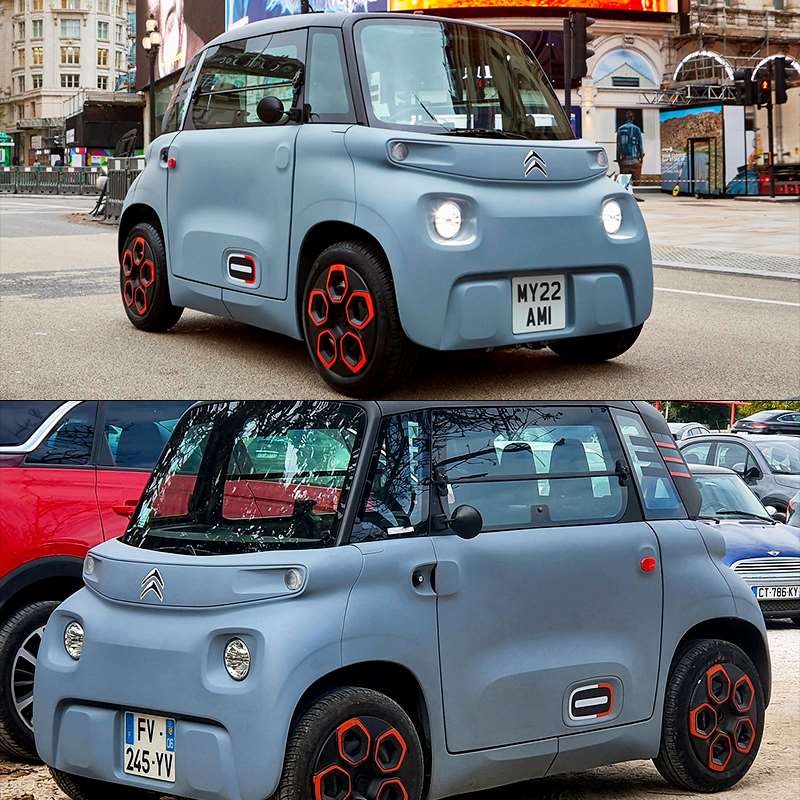
If you’ve heard of the Citroen Ami before, it’s because the brand gave the vehicle a facelift for the 2020 model year, and sales of the refreshed model just began in June of this year. The first model of the Ami was sold in retail stores from 1961 to 1978. The Ami is a two-seater electric quadricycle that also has storage space for your belongings.
Consumers on the website CarSurvey.org, which is supported by advertisements from Google, awarded it fair dependability scores (8/10), however the Ami only received a rating of 5/10 for its comfort. The Ami is just 95 inches in length, 55 inches in width, and 60 inches in height.
Sbarro Autobau

No, Sbarro Pizza does not have its in-house automobile manufacturing division. This particular Sbarro was a Swiss automobile manufacturer that was established in 1971. The Autobau, which Jalopnik called “the ugliest car we’ve ever seen,” “grotesque,” and “a mishmash of auto-design themes,” was created in 2010 as a tribute to Fredy Lienhard, a Swiss racing driver.
Jalopnik described the Autobau as “the ugliest car we’ve ever seen,” “grotesque,” and “a mishmash of auto-design themes.” At that year’s Geneva Motor Show, it made its premiere for the first time. The vehicle has a horsepower rating of 500. However, its bodywork is very poorly designed in terms of aerodynamics. As far as we are aware, the one-off concept has not been sold to anyone.
Ford Pinto

It’s safe to say that the Ford Pinto takes the cake for the worst automobile on our list. It was given its very own segment on the show Worst Car Ever (February 21, 2018). The Los Angeles Times used the phrase “famously terrible” to characterize the Pinto. Pintos had a history of exploding while their occupants were inside, which contributed to the vehicle’s negative reputation. primary trouble spots were the vehicle’s fuel tank and its back.
The vehicle was susceptible to collisions, and even a minor jolt to the gas tank would cause it to become severely damaged, cause fuel to flow out of it, and cause the vehicle to catch fire. For these incidents, which resulted in the deaths of 27 to 180 people, 117 lawsuits were filed against Ford.
Lamborghini LM002

The Lamborghini LM002 had a value of between $300,000 and $400,000 at the time it was put up for sale. Even for more recent LM002s, that price has decreased by about half since it was originally listed. The off-road truck that Lamborghini attempted to create did not fare very well when it was released to the public. They were developed to be sold to the armed forces and their creator, Rodney Pharis.
However, the military did not accept the vehicle after discovering it had poor rear-handling characteristics. When driving off-road, the vehicle was difficult to manage due to handling issues in the back. It was marketed to the general public in the United States and became known as the “Rambo-Lambo.”
Marcos Mantis M70

Infamous for its hideous design, the Marcos Mantis M70 has the reputation of being “the car that makes the Aztek look gorgeous” (AutoTrader). It was ranked by Automobile Magazine as one of the “ugliest vehicles ever manufactured” and one of the “ugliest coupes of all time.”
The Mantis didn’t have a completely unsuccessful run. After undergoing modifications to make it suitable for competition, the vehicle was entered into the Mantis Challenge. The Mantis racers featured impressive speed characteristics, with a time of 3.7 seconds to go from 0 to 60 miles per hour. The civilian automobiles, in terms of their specifications, were adequate, but the appearance was so repulsive that they were never truly successful sellers.
Reliant Robin

This item may come as a surprise to some readers. The Reliant Motor Co., which has its headquarters in Tamworth, England, is responsible for the production of the three-wheeled automobile known as the Reliant Robin. The Robin was produced in three distinct generations (Mk1 through Mk3) during more than thirty years of continuous sales. It was at that time the second-most popular (also known as the best-selling) fiberglass automobile in the annals of automotive history.
However, the Reliant Robin had numerous significant safety issues, the most notable of which was its propensity to flip over readily in gusty circumstances. After having his crew make some minor adjustments to “the differential,” Jeremy Clarkson of Top Gear showed the rolling capabilities of the Robin.
Nissan Cube

According to EveryAuto.com, driving the Nissan Cube is an “underwhelming” experience. The Cube is a subcompact vehicle with the form of a cube, four doors, and a hatchback wagon body style. The engine of the Cube is a 1.8-liter four-cylinder unit. It only has 122 horsepower, sent to the front wheels through a six-speed manual transmission, a major letdown.
Compared to other ordinary cars, it has a low power output, and its fuel economy is also not very good. On the highway, it reaches its maximum of 30, which is not particularly high. Even with the higher price tag, the SL and CVT achieve a maximum of 31 miles per gallon.
Saturn Ion

The Saturn Ion was available for purchase from 2003 to 2007, although the initial two years of its production (2003–2005) were plagued with issues. Even though Saturn was able to eliminate the majority of the issues with the Ion’s first generation by making adjustments and implementing solutions toward the conclusion of the console’s production run, customers’ recollections of the flaws remain strong.
More than 16 thousand early models of the Ion were called back into production in 2009 due to issues with the outside lights. There have been other recalls, including ones for problems with the powertrain, the steering system, and the parking brakes. Customers have also expressed their dissatisfaction with the “Check Engine Light.”
AMC Pacer

One of the “12 worst automobiles ever manufactured,” according to a list compiled by The Globe and Mail, was the AMC Pacer. The design defect was the root cause of the majority of Pacer’s issues. The car’s doors were designed to be asymmetrical, which was a feat that was accomplished on purpose to make the Pacer stand apart from other vehicles. Additionally, having doors that were offset to one side made it simpler for passengers to climb up into the back.
As soon as the right door of the station wagon Pacer was opened, everything in the back of the vehicle was empty. Because of this infamous lemon, AMC incurs losses in the 1970s comparable to approximately $300 million in today’s dollars.
Plymouth Prowler

1997 marked the first year of production for the Plymouth Prowler, which would later be rebranded as the Chrysler Prowler and released to the public the following year. The Prowler only remained on the shelves until the year 2002 before being discontinued. The Prowler had a lot of problems that needed to be fixed. Right off the bat, it was criticized for having an underpowered V6 engine.
The Prowler was also only available in a single color, which was purple. That was clearly not helpful to the company’s sales stats, and in 1997, the Prowler only sold a few hundred units. Although it was reintroduced in 1999 with an improved engine, the automobile was never very popular (and its exorbitant price didn’t help matters, either).
Tesla Cybertruck

Who among us can forget the embarrassing unveiling of the Tesla Cybertruck? Elon Musk stepped on stage and attempted to demonstrate the car’s supposedly “bulletproof windows” by throwing a rock through one of the panes. The window, which should have been bulletproof but wasn’t, soon cracked so that everyone could see the damage it had sustained.
In addition to the devastating revelation (and extremely peculiar design), the Cybertruck is unable to be operated on public roadways. Because it does not yet have side mirrors, a front bumper, or windshield wipers — all of which are normal, essential components – the Cybertruck is currently not road legal. There has been no movement on the part of the government to alter its legislation in order to meet Musk’s ambition.
Chrysler PT Cruiser

From 2001 through 2010, Chrysler was able to satisfy consumer demand for the one-of-a-kind PT cruiser. As soon as manufacture of the automobile began in 2000 for the 2001 model year, it was clear that there would be several problems with the vehicle. The engine is the component of the PT Cruiser that breaks down the most frequently.
It had a rough idle and a “Check Engine Light” that illuminated even though there were no problems with the vehicle’s engine. Chrysler was concerned about poor sales, and in order to assist the corporation get into better financial health, they intended to eliminate models that had a low rate of sales (the financial crisis was looming large at the time).
Hummer H2

From 2002 until 2009, Hummer H2s were on the market, and in many respects, they were quite successful vehicles. The truck’s appearance was designed to seem like a mammoth, which likely contributed to its strong performance in testing simulating head-on collisions. However, the most obvious issue with the Hummer, and one that the manufacturer is known for refusing to accept, is that the vehicle has awful gas mileage.
The H2 had a tank capacity of 32 gallons, however it only managed 10 miles per gallon in the city and 13 miles per gallon on the open highway. This was a ridiculously poor fuel economy. The H2 gets roughly the same mileage as a brick on wheels, which is why General Motors decided to cease manufacturing them.
Fiat 600 Multipla Marinella

The Multipla was available in a few different iterations, with the Marinella being by far the most notorious. The Marinella was repulsive, much like the other iterations of the dish. The Marinella, also known as the 600T, featured a rear-mounted 6.3-liter four-cylinder engine that was notoriously vulnerable to damage in the event of a minor collision.
Nevertheless, in contrast to the Pinto, these engines did not catch fire to our great relief. The Marinella had an open roof and a bench with wooden slats at the back of the vehicle. Even though Fissore was the one who developed it, very few people thought the Marinella was either elegant or useful. The fact that it could only reach speeds in the fifties prevented it from being driven on highways.
Smart Fortwo

The Smart Fortwo is a model of a city car that seats just two people and is presently in its third generation of production. It is a product of the subsidiary Smart, owned and operated by Daimler AG. However, despite its widespread appeal and the fact that more than 1.7 million units have been sold as of 2014, the Fortwo suffers from significant shortcomings in the area of safety.
After conducting a number of crash tests, the Insurance Institute for Highway Safety ultimately assigned the Smart Fortwo a “poor” grade. This was due to the high likelihood that passengers’ heads would collide with the steering wheel in the event of a collision.
AMC Gremlin

Additionally included on the list of the “12 Worst Cars Ever Built” was the AMC Gremlin (Globe and Mail). Automobile Magazine admitted that “history had been unkind” to the Gremlin and that the Gremlin’s technical flaws were to blame for this “unkindness.” Despite its commercial success, many complained that the product was poorly handled (G&M called it “atrocious”).
A peculiar typo in the Gremlin’s style was also present. The back window that flipped up was very flimsy and easy to crack. If they weren’t careful, a driver could easily break it off while holding it in their hands. Hagerty claimed that the Gremlin was a “punchline” for comedians and that it was “much-maligned” because of the shortcomings of the film.
Chevy SSR

The Chevrolet SSR was manufactured in the year 2003. The fact that the vehicle was built entirely on a computer, with no human involvement in the process until it was time to make the finished product, was one of the aspects of the construction process that raised some warning flags. The SSR was only manufactured by GM for a brief period of time, from 2004 until 2006, until the company decided to stop producing it.
In addition, GM declared that it will be terminating operations at the Craft Center, which served as the primary manufacturing facility for the SSR. The difficulty in changing from first to second gear was the SSR’s most common issue, and it was almost always accompanied by bogging of the engine.
Suzuki X-90

The Suzuki X-90 was only manufactured for a brief period, from the years 1995 to 1997. Lemon Vehicles selected the X-90 as one of the “worst cars in the UK” to highlight on their show. Because of its diminutive size, the inside of the X-90 was frequently criticized for being overly confined and uncomfortable.
Damage to the transfer case was another issue with the X-90, and it was caused when the vehicle was used in four-wheel-drive mode on dry roads. Another issue frequently occurred was the removable T-Top being stuck in its position. The X-90 was referred to as “surreal” and “bizarre” by The Truth About Cars, which also stated that it was a vehicle that “Mickey and Minnie Mouse would drive.”
Cadillac Seville
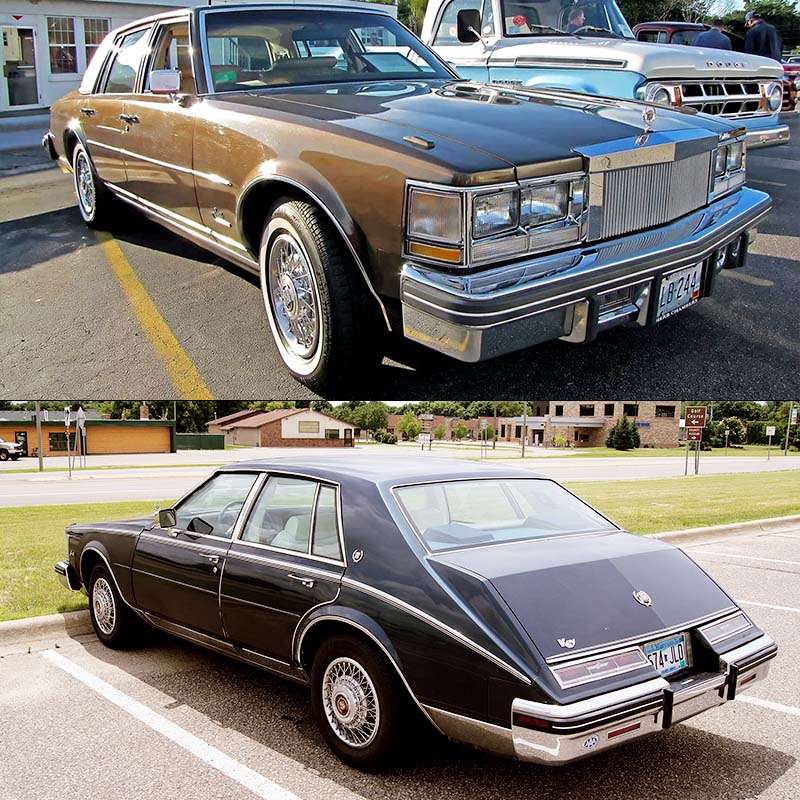
Seville was one of Cadillac’s most popular models for decades. The Seville was a car that was manufactured from 1975 through 2004 and was more compact. HotCars deemed the Cadillac Seville one of the “most disappointing automobiles that Cadillac” has ever produced. Poor quality control significantly contributed to Seville’s lackluster sales performance in its final years of production.
People who were sick of emptying their pockets at the petrol pump were not fans of the V-8-6-4 variable displacement engine either. These individuals wanted something more affordable. Inadequate quality control at GM plants at the time also contributed to a significant number of Sevilles developing mechanical issues.
Pontiac Aztek

According to Torque News, the Pontiac Aztek is the “worst automobile of all time,” topping a list of one hundred different cars that were evaluated. According to Thrillist, the Aztek was “the largest failure in the history of the automotive industry.” One of the reasons why the Aztek was given such a bad reputation is because of the style used.
It was a strange minivan crossover that stood out as one of the most unattractive vehicles out there on the road. It was described as “ungainly” and “overstyled” by AutoTrader. The Aztek Pontiac was just too ugly to sell, despite the fact that customers didn’t have too many complaints with the car in terms of how it was handled (according to polls, it did about as well as average).
Ford Edsel

When the Ford Motor Company was trying to market the Edsel, it touted the automobile as “the car of the future.” However, the Edsel was not a success. Buyers didn’t agree. The Edsel was not just pricey and unattractive but also badly manufactured and ill-timed. According to Hagerty, the early automobile became a “poster child for commercial failure.”
The Edsel was only manufactured for a total of two years throughout its lifetime. The Edsel was priced so high that most people couldn’t even come close to affording one. As a failed initiative, the Edsel cost Ford an equivalent of $250 million in today’s money, and the story of its failure is now used as a teaching tool in business schools across the country.
Davis Divan

The Davis Divan got off to a rocky start since Gary Davis, the man who started the Davis Company, had no prior expertise in the automobile manufacturing industry. Davis was in the business of selling secondhand automobiles, and he was certain that he could find a market for the peculiar Davis Divan in a way that would result in monetary gain.
In the end, he was completely incorrect. The public in the United States was not prepared for something like the Divan’s three wheels at the time. In addition to this, the automobile was extremely accident-prone. The Davis Company was successful in raising $1.2 million from automobile dealerships, but it was unable to either pay its production workers or deliver the automobiles to the dealerships.
Nissan Cargo

Consumer testimonials on the website Cars.com indicate that the Nissan Cargo has serious issues with its batteries and rear cameras. The review website only awarded the vehicle a score of 3.8 out of 5, citing the battery’s subpar performance as the primary reason. The Cargo also got off to a shaky start since the company first gave its consumers very few customization options to choose from.
The HV 1500 was the initial generation of the Cargo, and during that time, there was just one available engine and one kind of roof. Even though two engine choices were available for the NV 2500, which was the second generation of the vehicle, the problem of the temperamental battery was still very much a problem.
Plymouth Fury

This one is going to be familiar to fans of Christine. The well-known Stephen King horror film used the Plymouth Fury (1959) as the main protagonist. The Fury, which was well titled, may have been a star in the movie, but it was not as well-liked as its name suggests among mechanics and car professionals. One of the “most comical” automobiles on the market was the 1961 Plymouth Fury, which received this description.
As was the case with the Seville, there were problems with quality control at the factory producing the Chrysler Fury, even if the new exterior style helped improve sales. During the sixties and seventies, quality control was a concern that plagued all Chrysler vehicles; nevertheless, it was the Fury that was negatively affected the most by this problem.
Renault Avantime

French automotive designer Patrick Le Quement was responsible for the creation of the Renault Avantime. “ahead of its time” is the meaning behind the word “Avantime.” Later in his career, Le Quement would develop the Ford Sierra. The Avantime was a tremendously ugly automobile, which contributed to its lower level of commercial success in comparison to the Sierra.
The Avantime was presented to the public for the first time as a concept vehicle. Many people believed it would not make it into production without significant alterations, yet it did. AutoCar referred to the MPV coupe as “barking insanely” and a “fantastic failure” in a review of the vehicle. The strange-looking automobile was only produced for two years, and only 8,557 units were sold.
Nissan S-Cargo

This car, which has an odd appearance, was given a name that contains a double meaning. The snail-like appearance of the Nissan S Cargo inspired the company to give it a moniker that sounded like the word “escargot.” In addition, “Small Cargo” was another meaning of the moniker “S Cargo.” The automobile was first shown to the public in 1989 at the Tokyo Motor Show, and at the time, it could only be obtained by placing a reservation.
The S Cargo, which was designed by Naoki Sakai, actually ought to have remained a concept car during its entire production run. Because CBS News ranked it as one of the world’s ugliest automobiles, nobody would buy it even if they wanted to.
Subaru Brat

The abbreviation “BRAT” refers to “Bi-drive Recreational All-terrain Transporter,” which is what the Subaru BRAT actually is. It was an odd automobile, caught between a sedan and a pickup truck, yet Subaru called it the BRAT. Despite the peculiar appearance, it was a commercial success from 1978 to 1994. The BRAT had a strange appearance and only had 73 horsepower.
The vehicle underwent a significant number of redesigns in 1982, followed by another round of redesigns in 1985. But the North American market rejected the BRAT first, and imports were stopped in 1987 after they failed to catch on there. The BRAT continued to be sold in additional areas all the way up to 1993, including New Zealand, South America, Europe, and Australia.
Vanguard CitiCar

The Vanguard Citicar was included on the list of “awful tiny vehicles” that CarBuzz compiled. Sebring-Vanguard was the manufacturer of the electric vehicle known as the Citicar. The company went out of business a few years later. The Citicar was simply a golf cart designed in the shape of a wedge. Vanguard took a chance that customers would like this peculiar tiny automobile because of the recent oil crisis and made the investment.
On the other hand, that was simply much too strange. The vehicle had two doors and two seats, weighed 1,303 pounds, and stood five feet tall. It was a classic (under five feet wide). The external design has not been put to rest just yet because the design of the Citicar may still be found in the Norwegian Kewet.
GMC Canyon

2004 marked the debut of the GMC Canyon for the first time. Despite the fact that it has a pleasant appearance and most likely would not be included on a list of the “ugliest automobiles,” the Canyon has suffered for a long time from reliability problems and mechanical breakdowns. US News says its safety and dependability scores are “unimpressive.”
According to Car Bibles, cars manufactured between the years 2000 and 2008 and between 2014 and 2015 are more likely to have electrical difficulties, problems with the brakes and steering, oil leaks, and defective “Check Engine” lights. J.D. Power only awarded the 2020 GMC Canyon a score of two out of five stars due to the vehicle’s unpredictability and unreliability. The GMC Canyon has taken a particularly hard hit from Consumer Reports’ criticism.
Pontiac Trans Sport

There was a series of minivans produced by Pontiac called the Pontiac Trans Sport. According to the Insurance Institute for Highway Safety (IIHS), the U-body minivans model, the Trans Sport, was unreliable. This caused the IIHS to take action against these vehicles. The Trans Sport received a lot of criticism from automotive writers, who referred to the minivan as a “dustbuster”.
The windshield of the Trans Sport was unusually long and slanted sharply, which led drivers to feel uneasy behind the wheel of the vehicle if they weren’t accustomed to driving a minivan with such a windshield. Even after Pontiac gave the van a makeover and teased the Trans Sport cruelly in advertising, sales of the van were unimpressive despite Pontiac’s efforts to improve its appearance.
Lexus SC 430
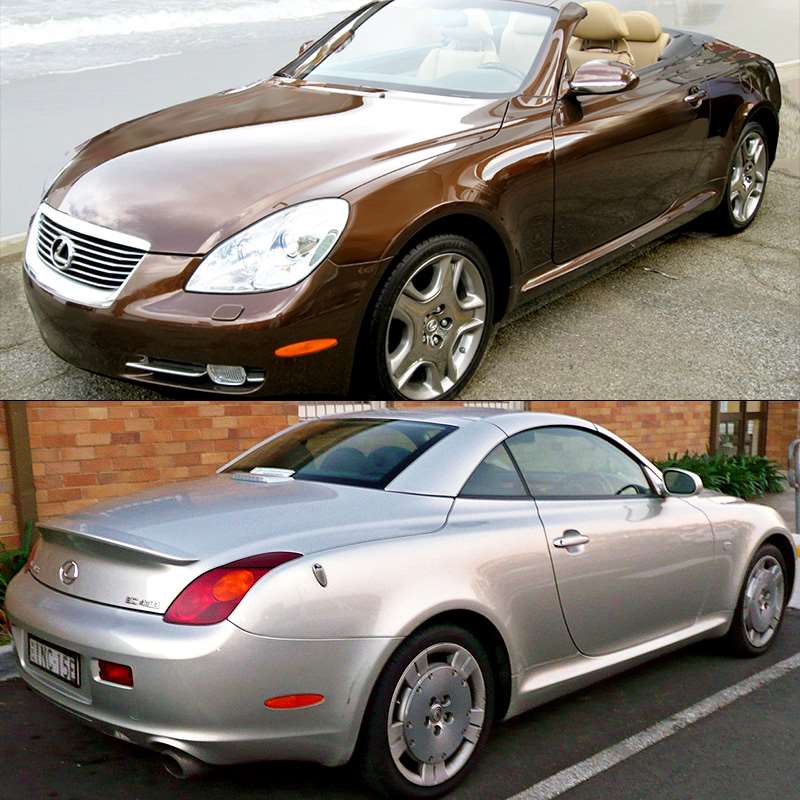
There are Lexus enthusiasts who really like the SC 430, while other fans have reservations about it. The vehicle was designed as a two-seater coupe before being transformed into a sporty convertible. It did not have particularly aggressive or sharp handling, and many resellers on Club Lexus rated the resale value as “horrific.” The SC 430 is frequently criticized for having poor external style, a high price, and poor ride quality, among other things.
According to The Truth About Cars, the SC 430 was “styled, rather than engineered.” The publication also stated that it “simply looked awful.” Some bloggers had the opinion that the SC 430’s criticisms were exaggerated, and they claimed that others were exploiting the SC 430 as a “scapegoat.”
Nissan Juke

According to What Car, the dependability of Nissan vehicles has been deteriorating for quite some time. The Nissan Juke is a good illustration of how the reliability has deteriorated to the point that it is only rated 28/31 among the main automobile manufacturers. The figures that the Juke posted in the compact SUV category were about average, and later versions have done better than their predecessors.
According to previous owners, the most significant problem with the Juke is an issue with the engine. More than a quarter of the issues that customers had with their Jukes were reportedly related to the vehicle’s engine. Nissan was unable to establish a significant audience for the Juke in the United States. Thus, the company decided to halt production of the vehicle there.
Hyundai Tiburon
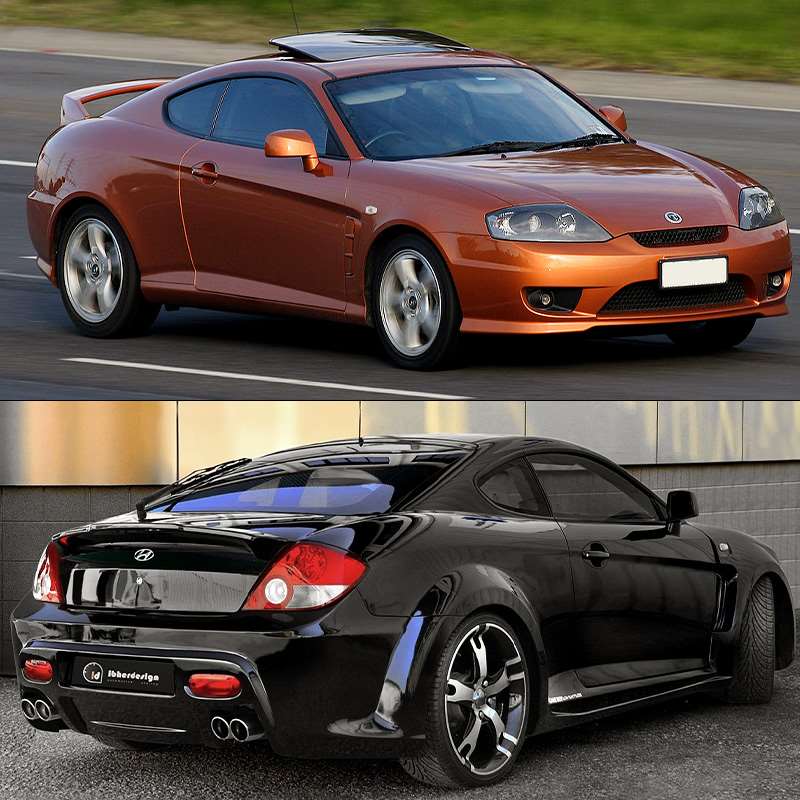
According to Motor1, the Hyundai Tiburon is considered one of the “worst sports cars” in the world. When Hyundai was still considered a “new firm” and was only beginning to establish itself in the automotive industry, one of its first models was the Tiburon. The company’s initial effort at making a sports automobile was the Tiburon, but it lagged behind other cars by a significant distance and was ultimately unsuccessful.
To begin, there wasn’t a whole lot of acceleration. With a 2.7-liter V6 engine, the sprint from 0 to 62 miles per hour took more than seven seconds. The sports car’s entry-level variant has a meager 105 horsepower. In addition, the handling was noted by Motor1 as “lifeless” and “lacking a good reaction.”
Chevrolet Caprice

According to the information provided by Car Gurus, one of the most frequent gripes voiced by owners of the Chevrolet Caprice is that the vehicle idling occurs while shifting gears or coming to a stop. At one point in time, the Chevrolet Caprice was widely considered to be one of the brand’s most desirable models.
According to The Washington Post, General Motors “missed the point” when they revamped the Caprice by making it bigger as part of the redesign process. The Caprice had a makeover in the nineties thanks to a new design. The first years of manufacturing for the automobile were from 1966 to 1996, and then, following a break of five years, production continued from 2001 until 2017.
Ford Taurus

Ford announced to the public that it was planning to stop producing the Taurus because the company intended to place a greater emphasis on pickup trucks and sport utility vehicles (SUVs) in 2018. The Taurus’s poor gas mileage and underwhelming basic engines were its primary flaws and the primary cause for its declining sales, which led Ford to conclude that discontinuing the model was the only reasonable option.
The vehicle got just 18 miles per gallon in the city and 26 miles per gallon on the highway, which isn’t very good compared to comparable automobiles today. Following the release of a significant statement from Ford, the automaker decided to discontinue the production of the Taurus.
Yugo GV

Gold Eagle referred to the Yugo GV as “one of the worst automobiles ever” in their review of the vehicle. The Yugo GV, which was manufactured by Zastava, a firm that constructed its automobiles in Sun Valley, California, was very affordable and of poor construction quality. Those who had GVs nearly always had to deal with some kind of mechanical issue with their vehicles at some point.
Despite having passed its safety testing, the GV performed poorly when it was involved in collisions. The safety tests are often quite precise; nevertheless, the GV was able to pass while still being in an extremely hazardous condition. In addition, for a car of its size, the GV had a terrible fuel economy.
Toyota Prius

When it comes to their Prius, some owners speak in almost sanctimonious terms, while non-owners and owners alike find the Prius revolting. Drive Tribe wanted to know why the Prius was “hated so much,” so they conducted a comprehensive inquiry into the matter. Negative individuals were of the opinion that the automobile had inadequate handling and safety features, in addition to thinking that the strange design of the vehicle was unattractive.
The “green tires” of the vehicle, which were constructed from eco-friendly materials, had a worse grip on the pavement and made the vehicle extremely difficult to control when wet or snowy weather. In addition, a surprising percentage of people who responded to the call described the automobile as “pretentious.”
Nissan NV

According to RepairPal, the Nissan NV does not have a good reputation when it comes to dependability. Customers have given the van’s dependability two out of five stars. The Nissan NV is ranked 21st out of the 21 commercial vans that are now available on the market when it comes to dependability and predictability.
The Nissan NV has a “bad” grade for “ownership cost” because of its high yearly repair expenses, which come to roughly $906. The faults that occur are typically rather serious, despite the frequency of maintenance generally in line with that of other cars. Late 2019 Nissan NV cars have received higher evaluations, while earlier versions haven’t done quite as well.
BMW I3

The BMW i3, which rated in the middle of the table in reliability polls, is yet another vehicle that falls short in the field of dependability. The German automobile manufacturer placed 21st out of the 31 major manufacturers, which is a position that is somewhat below average. According to Electrek, the opinions of reviewers about the i3 are quite mixed. It’s a hit with some folks and a total turnoff for others.
They came to the conclusion that, in contrast to the Tesla Model 3, the BMW i3 appeared to be completely lacking in quality. The Model 3 has a range that is twice as high as the Model S at a lower cost. The resale value of the i3 is also significantly decreased.
Lincoln MKT

The Lincoln MKT was built by Ford from 2010 to 2019 as a mid-sized crossover. The fact that the premium SUV only ever came in a single generation for the majority of its production run was an issue in and of itself. According to Car & Driver, which gave the MKT a score of 4 out of 10, the car lacked the sophistication and opulence of rival automobiles with prices comparable to the MKT’s.
The MKT’s appearance was also criticized because the car was positioned “horribly” (according to GoodCarBadCar.net) over the back wheel. According to The Truth About Cars, the style of the MKT was “hilariously bad.” Consumer Reports characterized the maneuverability of the handle as “clumsy,” “cumbersome,” and “lacking agility.”
Isuzu VehiCross

The Isuzu VehiCross is another much-debated model. Some individuals, such as Hagerty, referred to the VehiCross as “a significantly undervalued contemporary classic,” but others believed that the car’s appearance was just too strange. The nineties were the peak of success for the VehiCross, a compact SUV that debuted that decade. It was originally offered for sale in Japan during the years 1997 and 1999.
Even though it didn’t have a lot of horsepowers, the VehiCross was nonetheless a decent automobile in terms of build quality; the amount of horsepower it did have was enough for the era. The vehicle was capable of performing well off-road, but some people found the styling to be unappealing, which contributed to the low number of sales.
Youabian Puma

The dazzlingly brilliant blue Kambiz Youabian, a cosmetic surgeon based in Los Angeles, is the man behind the creation of the Youabian Puma brand. Youabian was interested in designing and constructing his automobile, but he wanted to do something innovative with the project.
As a result, he abandoned his initial goal to build a sports car and instead settled on the idea of constructing a vehicle that was a hybrid of a monster truck and a conventional automobile. The Puma measures twenty feet in length and is powered by a Chevrolet LS7 engine housed underneath the hood. The Volvo was used to make the cabin and the headlights, while the Buick was used to make the taillights.
Crosley CC

Things didn’t start to go south until the Crosley CC was towards the conclusion of its production run. Still, at the beginning of the car’s reign, the Crosley CC was responsible for introducing a number of novel features (right after WWII). The Crosley boxy car was the first vehicle available to the general public with an overhead camshaft engine.
Additionally, the CC was the first automobile to be referred to as a “Sports Utility Vehicle” and to include four-wheel caliper disc brakes. According to the opinions of the experts, Crosley experimented with a tin block engine. During World War II, this engine served its purpose well in the military, but when put to use by civilians, it was not nearly as effective.
Fiat 500L

According to Bloomberg, the 2019 Fiat 500L has an “overpriced and underperforming” description. In spite of “aggressive” marketing for the Fiat 500L, the vehicle did not live up to expectations. Car and Driver detailed the reasons why the 500L “got no love” from them, including the fact that the gearbox was “lazy” and the 500L slowed down in traffic.
The handling was awkward, and there were very few or no driver aid options available. Other problems included: According to Car and Driver, driving and looking at the vehicle was an “awkward” experience. The only two positive features were the enormous cargo room (the “L” badge meant for “Large”) and the Apple and Android CarPlay systems.
Citroën C4 Cactus

The Citroen C4 Cactus received a rating of 6/10 from Top Gear, which indicates that the publication thought it was only average. The hatchback is on its way out of production, with this year most likely being its final year in production. What Car gave the Cactus an even worse rating of 2 out of 5, making it their lowest-rated vehicle overall. It received a 3/5 rating from CarWow.
Some of the car’s dependability problems are probably to blame for its lackluster ratings. According to What Car, the most typical faults are bumper trim fallouts, which occur when the adhesive loses its adherence to the trim over time, as well as difficulties with the bonnet latch, the starting motor, and the automatic gearbox. In addition, customers reported leaking fuel.
Mitsuoka Orochi

The Mitsuoka Orochi began life as a concept vehicle. In 2001, it was created as a high-end sports car in Japan. In 2006, the sports car was finally put into production after a series of updates and revisions in 2003 and 2005. The 3.3-liter Toyota V6 engine was found under the hood. Auto Trader described the Orochi as “weird looking.”
Top Gear referred to it as “dead” in the lineup in 2014 and stated that the automobile is removed from the lineup was “not a bad thing.” The Orochi’s dimensions were much more conventional than those of the bizarre-looking car they created.
Allard P2 Safari

There are a number of factors that contributed to the demise of the Allard Motor Company; nevertheless, some automotive historians point to the failure of the Allard P2 Safari as one of the most significant factors in the company’s decline. The P1 served as the basis for the development of the P2. The P2 was a large car that could fit eight people and had a V8 engine.
Allard lacked the financial resources necessary to conduct adequate research and development. Therefore, the corporation was unable to compete with automobiles that were not only more affordable but also technologically and technologically advanced. The P2 and the other Allard automobiles were all one year behind their respective competitors compared in the market.
Mini Cooper Coupe

People have different opinions about the Mini Cooper Coupe. On the overall scale of vehicle dependability, the Mini Cooper has a score of 117, which places it just slightly below average (the average is 118). When compared to other vehicles, the MCC has more affordable repair expenses; nevertheless, when it does require repairs, those repairs take significantly longer to complete, and the vehicle is typically out of service for a little more than 2.6 hours.
On the other hand, the MCC received excellent ratings from the Insurance Institute of Highway Safety in the year 2016. The most important factor in determining whether or not you enjoy the MCC is whether or not you have an aversion to driving a compact car.
Aston-Martin Cygnet

When the Aston Martin Cygnet was first unveiled, Car Throttle hailed it as “adorably horrible,” while Jalopnik labeled it a “poor joke.” The Cygnet is a very small automobile that might be thought of as a luxurious variation of the Toyota iQ. AutoCar gave the Cygnet a rating of three out of five stars.
Aside from prospective Aston Martin purchasers who were interested in learning more about the Cygnet, there was no actual market for the vehicle. In general, the ride was not very smooth, and the Cygnet had a problematic manual transmission. Car Magazine referred to the Cygnet as a “April Fool’s Joke” that could have been real because it was built on a “dumb notion.”
Infiniti QX56

Repair Pal provided a rundown of the Infiniti QX56’s specifications. With a reliability score of 2.5/5, this luxury full-size SUV is ranked #12 out of 19 models. The annual average cost of repairing a QX56 is $807, which is more expensive than the national average. This is because problems that arise with luxury vehicles typically involve more expensive parts and labor.
Technically speaking, the QX56 was only manufactured for a single year, which was 2011. Prior to that, we referred to it as the Q80. Because of the extensive overhaul, the vehicle now goes by its new name. The automobile was not as fantastic as it ought to have been considering the price, which is almost $76 thousand for the fully-loaded version.
Nissan 350z

Despite the fact that the Nissan 350z went out of production 11 years ago, its absence is still felt by automotive enthusiasts. It was first available to the public in 2002 as a two-door coupe, and beginning in 2003, it was also manufactured as a roadster. The initial price of the 350z was somewhere about $38,070, and today’s going rate for a secondhand one is anywhere from $5,000 to $15,000 dollars.
Despite the fact that Nissan enthusiasts are unable to obtain a brand-new 350z, the model has been followed by the 370z. Although it appears to be more aggressive than the 350, the 370z shares several characteristics in common with that model.
Chrysler Town & Country

Chrysler produced the Town & Country minivan from 1999 to 2016 and sold it for a long time. Minivans went through five generations before Chrysler decided to stop producing them in response to the growing popularity of crossover vehicles. Even though it had its day in the sun, not everybody was a major fan of the T&C automobile. RepairPal stated that there were dependability concerns with T&Cs.
They only received 3.3 out of a possible 5 stars on the website, and the vehicle did not even make it into the top 10 for reliability when compared to other automobile models. On the website ChryslerProblems.com, the vehicle was featured prominently, and it held the fifteenth position out of the eighteen available for Chrysler models.
Bugatti Veyron

It’s no secret that the Bugatti Veyron is a sought-after sports car. Rappers use the Veyron in their music videos, celebrities view it as a symbol of wealth, and the price tag of $2.5 million makes it nearly impossible for anyone to get one. When it comes down to it, though, can this sports vehicle truly hold its own against the competition?
The value of Bugattis falls rapidly. The value of the car will quickly depreciate if it is driven an excessive amount of miles. To add insult to injury, the Veyron gets a laughably low 7 miles per gallon in the city and 15 miles per gallon on the highway in terms of its gas mileage. Given how much money you’ll have to spend on fuel, you might as well just walk.
Suzuki Wagon R

The Suzuki Wagon R is a vehicle with a peculiar appearance. The Wagon’s R symbolizes both relaxation and revolution, as implied by its name. The tall wagon structure, which is what gives it its distinctive appearance, makes the most of the available cabin space while adhering to the parameters imposed by the automobile. Just like the majority of the other vehicles on our list, the Wagon R has its fair share of critics.
Even though it has been around for the past six generations, others still dislike it. The number of complaints reached a high point in 2018 and 2019, just around the time that more than 40,000 Wagon Rs had to be recalled owing to a problem with the gasoline hose.
Jensen S-V8
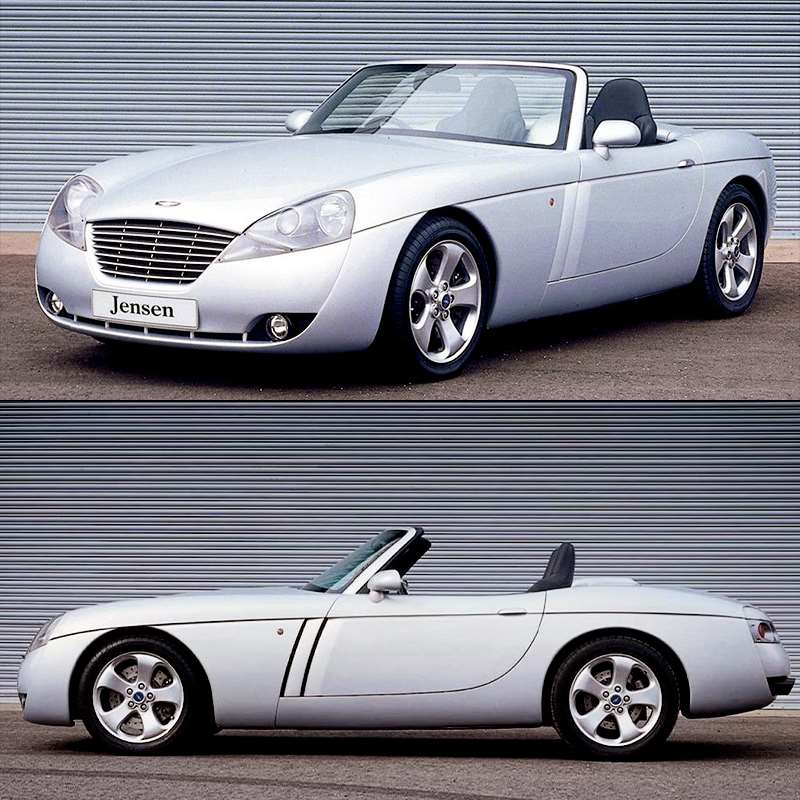
At its core, the story of how the Jensen S-V8 came into being is a somewhat peculiar one. Most recently, the Jensen name was given to the S-V8. In 1998, the two-seater convertible was introduced to the market, and there was an initial manufacturing run of three hundred vehicles.
By 1999, 110 orders had been placed. After a delay of two years, manufacturing did not begin until much later, although there were problems with the plants. In the end, the Jensen factory only released twenty S-V8 models into production. The oxfordshire-based company bought Jensen, constructed twelve more of them, and sold each one for $40,000. Despite this, it wasn’t exactly a stellar performance.
Jetstream SC250

The Jetstream SC250 “looks strange,” but it could have the “seeds” of something amazing, according to AutoCar. The Jetstream 250 is made in Cornwall by the company’s own product maker. It is a sports car with a mid-mounted engine and rear-wheel drive, and it is not particularly attractive. However, it is a fascinating topic. Despite its extremely lightweight build, the vehicle is capable of delivering tremendous speeds and exciting experiences.
Even though the turbocharged lightweight has a good amount of torque, AutoCar was not impressed with it and said that it did not live up to its reputation. The fact that the 250 was never put into production gives the impression that it was nothing more than a passing fad.
Bugatti 101 Exner GHIA

A 1951 and 1952 Bugatti Type 101 Exner GHIA was based on the Exner GHIA. After the destruction caused by World War II and the passing of Ettore and Jean Bugatti, it was constructed so that the Bugatti company could begin operations again. The Exner GHIA was ultimately developed as a direct result of Type 101. The famed automobile architect Virgil Exner was responsible for the design of the 101 GHIA, which was manufactured using the last remaining Type 101 chassis.
It made its debut at the Turin Motor Show, where it was not well received by attendees. The financing for the production of additional Exner GHIAs was not able to be arranged, and the Exner creation did not revitalize the marque in the way that was intended for it to do so.
Mitsuoka Nouera

Mitsuoka, a Japanese automaker, created the Mitsuoka Nouera. The rear and front appearance of the mid-size saloon had been updated, and it featured dual circular headlamps and a chrome grille. All of these details contributed to the vehicle’s traditional English appearance.
To suggest that the Nouera was a success would be an overstatement. It was the first time that Mitsuoka produced a non-key vehicle that was not based on a Nissan model. At the time, Nissan was engaged in fierce competition with the Accord, and the Nouera was unable to successfully carve out a specific market segment for itself. The design was so unconventional that it prevented the car from being successful. As long as it’s still available, the product isn’t a household name.
Bufori Geneva

One of only a few hundred “Luxury Saloon” versions were produced. It is possible that its distinctive characteristics were the reason why it was never manufactured as a mass-produced car; in fact, the plant in Kuala Lumpur where it was produced never made much of an effort to do so, although there are still a few produced each year.
There is enough space in Geneva for a cigar humidor, an automatic coffee maker, a kit for making Chinese tea, a mini-bar, and a refrigerator. The seats themselves come equipped with massagers, and the vehicle also features thermal night vision cameras and an air suspension that can be adjusted. Even if it’s one of a kind, mass production might be a touch too strange for it.
Toyota Mirai
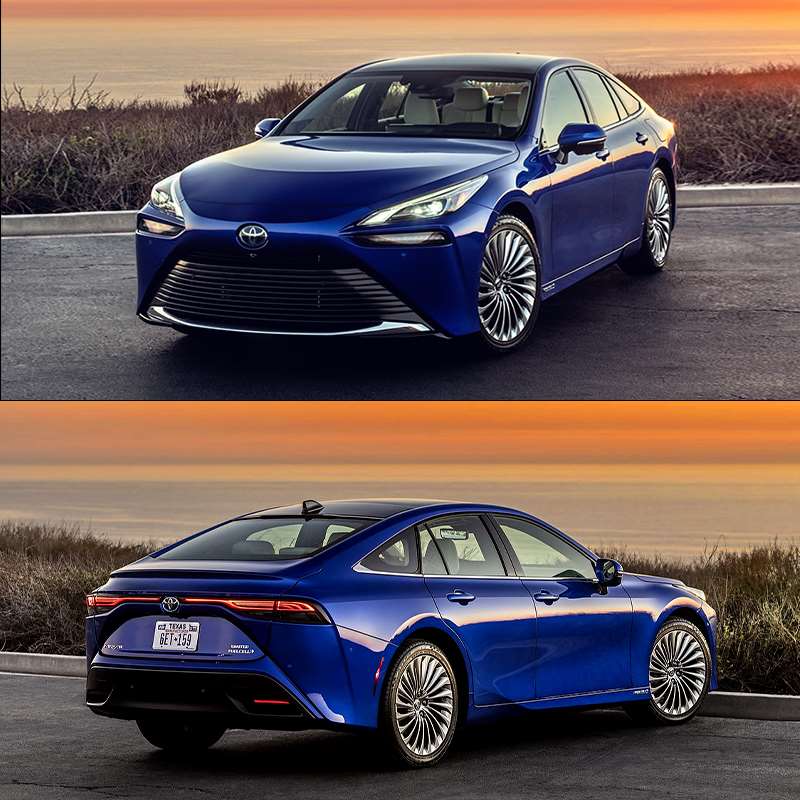
Toyota’s PHEV is one of the first mass-produced and commercially available fuel cell vehicles. During its first year of manufacturing, sales of more than 11,000 units were recorded. According to the EPA, the Mirai has a driving range of 312 miles on a single tank of gas and gets 66 miles per gallon when driven on the highway.
Refueling is the primary challenge faced by the Mirai. According to Edmunds, you don’t want to purchase a Mirai because you’re trying to save money. It is a “trouble to find fuel,” and despite the fuel economy, the automobile is expensive to drive and expensive to acquire. This is despite the fact that it is a “problem to find fuel.”
Fiat Panda

The Fiat Panda was first produced in the 1980s as a city car. In spite of concerns over safety, production has not been stopped. It was determined that the Fiat Panda was the least safe vehicle of 2018. The European New Car Assessment Program rated it no stars. It was only the second vehicle in history to receive a rating of zero stars, after only the Punto in 2017 in that regard (another Fiat).
The NCAP has given the 2018 model one of the worst ratings in the organization’s whole history. Before these concerns regarding its safety were raised, the Panda had tremendous success. More than 7.8 million have been produced, making it one of the longest single generations of automobiles ever.
Tatra T603

Tatra was a well-known Czech carmaker noted for its high-end models. Tatra began production of the 603 in 1956 and continued until 1975. The Tatra 77 was the first of a series of cars that were designed to have a streamlined appearance, and that line continued with this automobile. In the socialist Czech region, the only people who were allowed to drive around in 603s were high-ranking Soviet party officials and factory heads.
The peculiar combination of a rear-wheel drive system and a rear-mounted engine was a point of contention for the Soviets for a very long time. In spite of this problem, the Tatra 603 participated in a significant number of races and ended up winning sixty of them.
Bond Bug

Since it doesn’t make any sense to look at, this car has generated some quite polarizing opinions. Ogle Design and Reliant Motor Company collaborated to produce the Bond Bug, a two-seater, three-wheeled automobile known as the Bond Bug. From 1970 through 1974, production of the automobile lasted. It did not become popular among people.
Initial prototypes, which were known as the Reliant Rogue, were never put into production. People weren’t interested in purchasing the car because it had such a strange appearance and was so low to the earth when it was mass built. The launch was a lot of fun to drive, and it didn’t cost very much money, but it didn’t last very long, and there was very little hoopla to show for it.
AMC Matador
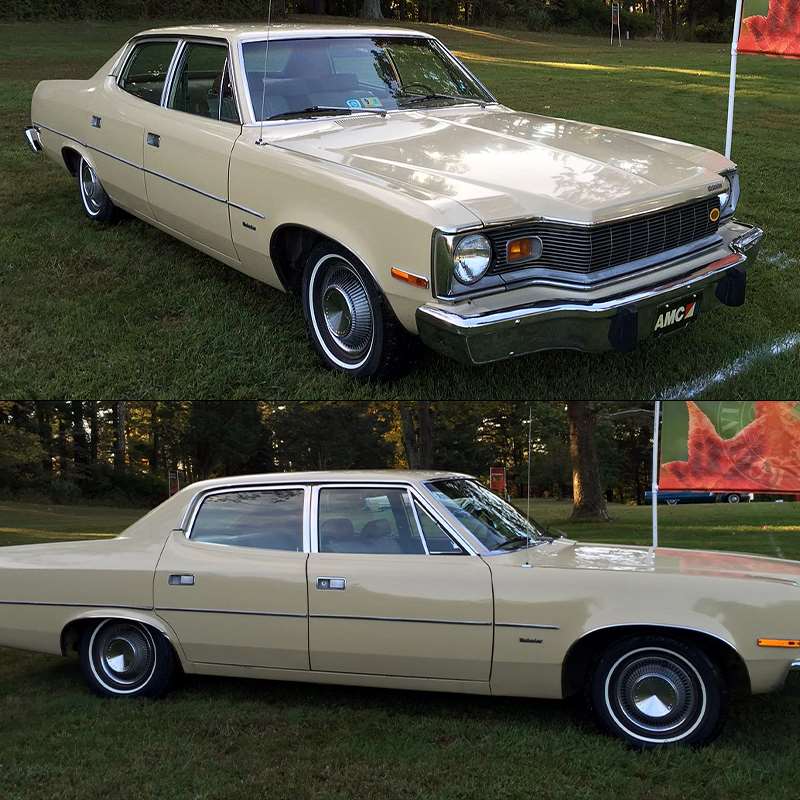
On CNN’s list of the ten automobiles with the “worst reputations,” this one appeared. CNN challenges the designation that the AMC Matador is one of the “ten worst passenger cars of all time” given by Hagerty Insurance. This designation was given to the Matador by Hagerty Insurance. There is no disputing the fact that the Matador was not a high-quality automobile, despite both parties arguing about how poor it was.
The AMC Matador was a dull mid-size automobile that was just a redesigned version of the AMC Rebel. According to Hagerty, AMC had a “bad halo effect,” and that aura touched everything, including the Gremlin, the Pacer, and the Matador. AMC’s failure as a business didn’t help, as it re-emphasized the fact that its cars weren’t up to snuff.
Trabant

VEB, a former East German carmaker, built the Trabant from 1957 to 1991. The Trabant was referred to as a “spark plug with a roof,” and there were four main variants available. Despite having a nickname that was in some ways mocking, the product was successful, and many million copies were sold. Trabant’s downfall was not about the car itself, but rather about what it stood for.
It did not undergo any changes throughout the course of its model years. It grew antiquated, and thus served as a metaphor for the stagnation of the economy in East Germany. The death of the Trabant was greeted by “Good riddance” by the majority of people living during that time period.
Corbin Sparrow
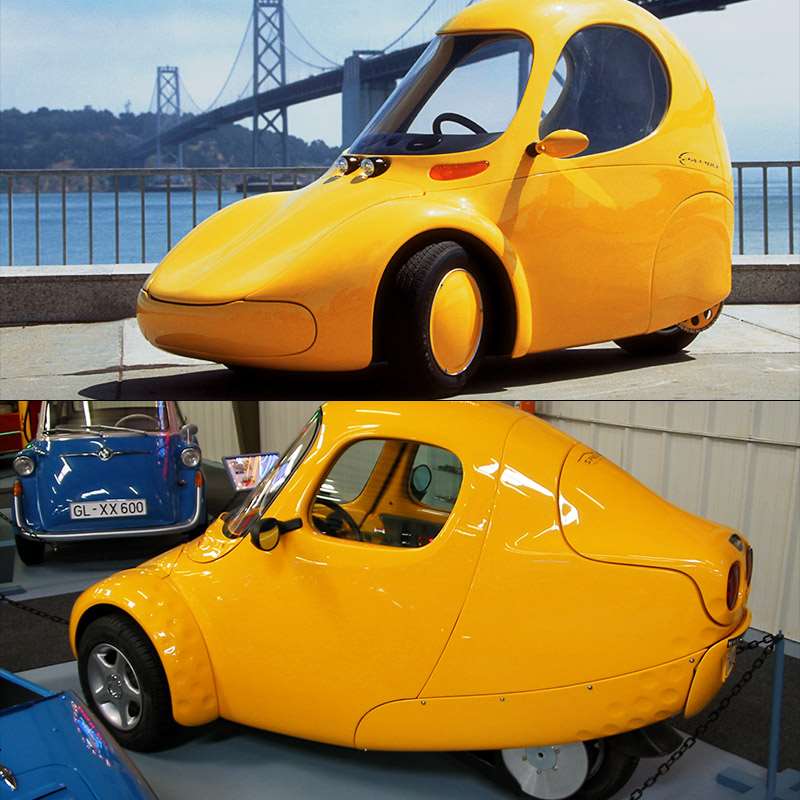
The Corbin Sparrow was simply too strange-looking to be a commercial success. People weren’t ready for the strange-looking vehicle, which prevented it from becoming the future’s standard mode of transportation. It was a battery-electric, three-wheeled car with room for just one passenger and was developed specifically for use as a commuter vehicle in the city.
Myers Motors, also known as Corbin Sparrow, continued to manufacture it well into the 2010s despite the fact that it did not enjoy widespread appeal. A “personal electric car,” the Sparrow is what you may call it. In 2008, the price of the automobile was $30,000, which did not include taxes or shipping. This price, for such a modestly sized automobile, did not exactly enhance the product’s chances of being successful.
Marcos Mantis XP

When it was introduced in the late 1960s, the Marcos Mantis XP was hailed as a “revolutionary” vehicle. Before the racecar’s disastrous performance at Spa-Francorchamps, it received a great deal of acclaim for being unusual, elegant, and green. People were willing to give the Mantis a chance, despite the fact that it appeared out of place when parked next to Ferraris and Fords.
That is, up until the point where there was an actual deluge at the 1,000 Kilometers of Spa. That year’s race was held in the rain, and the Marcos Mantis XP was not equipped to deal with the conditions. As a result of the holes in the bodywork, the interior of the car’s cockpit became flooded.
Tirrito Aryton R

The Tirrito Ayrton R debuted in 2011 at the Top Marques Monaco. The automaker was unknown at the time (and still is), and people took notice of the bright-orange Ayrton S. Tirrito Cars Italy made the R a supercar, with a top speed of 205 miles per hour and a 0 to 60 time of three seconds flat.
The appearance of the R was certainly its most polarizing feature. Someone on Reddit described it as a “drunken eleven-year-olds sketch” of what a sports car should be. The angular supercar is powerful and lightweight, and it has improved performance over 2009 prototypes, but its strange looks have given it a bad rap so far.
Toyota Yaris Verso

Customers dubbed the Toyota Yaris Verso “Ice Cream Van” because of its boxy design, and we don’t believe they meant it in a complimentary manner. The Yaris served as the inspiration for the Verso, which was reimagined as a cargo van and also goes by the name FunCargo. From 1999 until 2005, the automobile was on the market.
Despite the widespread derision it received for its outward presentation, the “Japan Car of the Year” title was bestowed upon it in the year 1999. Even though it underwent a number of redesigns throughout the course of its production, it was unable to escape the label “Ice Cream Van” that had been attached to it ever since its introduction.
Hyundai Sonata

This is Hyundai’s flagship mid-size automobile, and it’s also the company’s most popular. The problem stems from a specific production year’s worth of vehicles in this instance. Despite the fact that it is reasonably priced, has a number of contemporary conveniences, and is reliable, the Sonata model year 2011 has serious problems.
CarComplaints.com, a website that monitors and keeps a record of the difficulties that consumers experience with their vehicles, has deemed the 2011 Sonata to be the “Worst Model Year” for the brand due to the high repair prices and the ease with which problems arise. Complaints against the 2011 Sonata were three times as numerous as those for any other model year.
Pontiac Sunfire
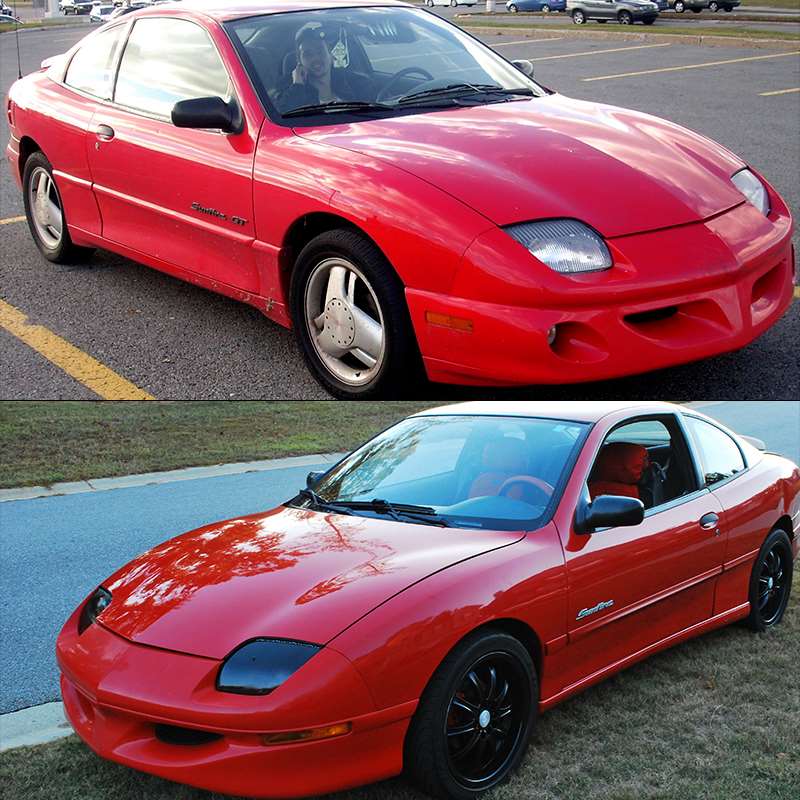
Even though it was a decent compact car when it was introduced, the Pontiac Sunfire has since been forgotten. After the Sunbird was discontinued in 1995, its successor, the Sunfire, was made available. The name was altered, and in addition to that, there were significant revisions made to the appearance. The Chevrolet Cavalier and the Pontiac Sunfire were very similar in terms of their exterior design.
The Sunfire went underwent a total of two makeovers over the course of its eleven-year lifespan. Even though it had its most significant update in 2003, sales did not significantly increase as a result of this. The Sunfire was taken out of production in 2005, and since then, it hasn’t been missed all that much.
Toyota Celica

The Toyota Celica was an instant hit when it was first introduced, and it quickly won a number of accolades for its outstanding performance. This sensation shifted during the course of time. After the nineties were over, the early 2000s were not a good time for Celica for a variety of reasons.
The reliability of Toyota products is often quite strong, although the Celica was known to experience spikes in customer complaints that were related to the suspension on occasion. But in the end, it was a lack of demand for the Celica that proved to be its undoing. Toyota made the decision in 2004 to cease production of the Celica in the United States due to the fact that very few individuals were purchasing the vehicle.
Subaru B9 Tribeca

Tribeca, named after a New York City neighborhood, was built on the Legacy platform. It was available in both five and seven-seat configurations and was supposed to be sold alongside the Saab 9-6X at one point; however, that plan was scrapped after GM sold the firm. When the Tribeca first came out on the market, its original design, which was greatly influenced by a concept car called the B9X, received a lot of negative feedback.
It was relaunched in 2007, and it proved to be its savior for a brief period of time before a recall led to some negative publicity. Because of the potential risk posed by Takata airbag inflators, Subaru had to recall 783,000 vehicles, the majority of which were Tribeca.
Toyota Tercel Wagon

Viewers of the program Breaking Bad will have no trouble recognizing this vehicle, as it served as Jesse’s “new” car on the show. The Toyota Tercel Wagon was a subcompact car that was manufactured by the company Toyota from 1978 until 1999. Although it was promoted as the Corolla II in certain regions, the Tercel did not seem to have the same staying power as its namesake vehicle.
The Tercel Wagon was discontinued in 1990 as a result of an update to a more capacious platform. Jesse Pinkman’s platform was now sharing space with the one used by the Corolla and the Springer Carib. People’s desire for “turbo” automobiles in the early 1990s corresponded with the decline of the station wagon’s popularity.
Chevrolet Trailblazer

Even if it has a few issues, the Chevrolet Trailblazer remains one of the most popular sport utility vehicles (SUV) produced by an American manufacturer. The Trailblazer’s 2021 model has been the subject of the greatest criticism due to its loud cabin and rough ride, which have been referred to as “lowlights.” According to MotorTrend’s findings, the 2021 Trailblazer just does not handle slopes very well.
People have noticed that the 1.3L I3 engine has trouble climbing hills and is quickly passed on the highway, which has led to conflicting opinions of the vehicle’s performance. In addition to that, the interior is really noisy. Miguel Cortina, the editor of MotorTrend in Espanol, said that the body of the vehicle “shakes like a wet dog” when it is driven on bad pavement.
GMC Acadia SUV

No one can argue with the GMC Acadia’s good looks. You shouldn’t always assess a car by its bodywork, but in this case, it wouldn’t be fair to say that it hasn’t changed much over the years and has become more stylish from the outside. It has been asserted that this particular make and model of automobile regularly have blown engines. In addition to this, leaks in the timing chain are still another typical issue that arises.
Having said that, there are still people out there who like this kind of automobile and wouldn’t consider purchasing any other make or version. It’s a coin flip between taking a chance and perhaps finding yourself in a situation where you’re drowning in debt.
Cadillac Escalade
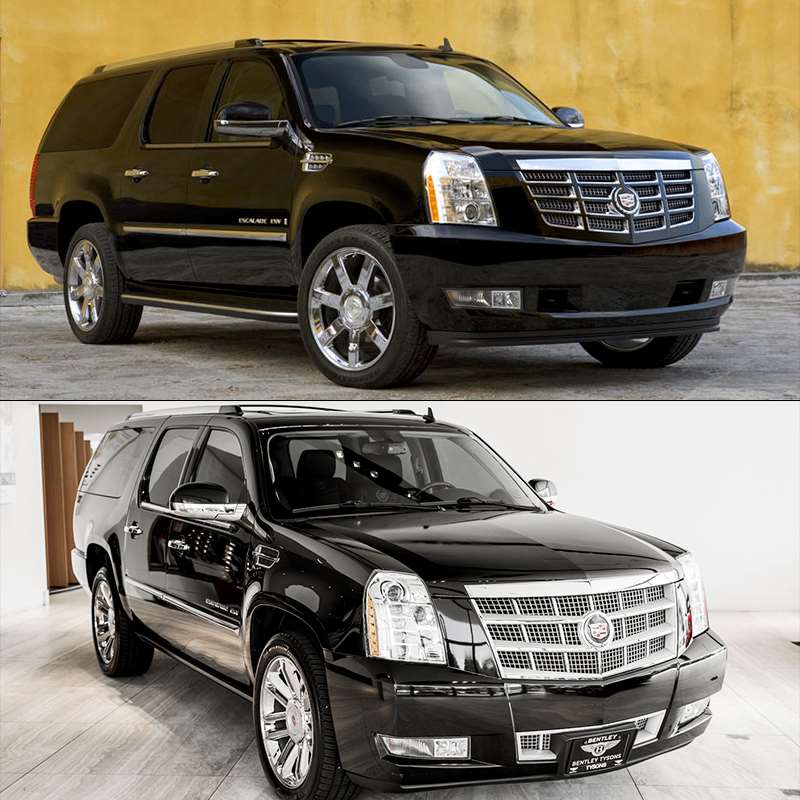
There have been a lot of negative comments regarding the 2014 Cadillac Escalade on CarComplaints.com’s database of car owner complaints. The website’s database of customer complaints places the model year 2014 at the bottom of the rankings for Escalade’s worst model years.
In 2014, the heavy-duty SUV, which has become a status symbol for a lot of people who own cars, received a lot of complaints about its bumpy ride and frequent need for maintenance. The typical amount spent on repairs for a Cadillac of that model year was reported to be $1,700 by owners. To make matters worse, the first sign of trouble appeared after only 35,000 miles on the odometer.
Mercedes Benz CLA

Another website that has researched and tracked the dependability of popular automobiles is Consumer Reports. Despite the popularity of the 2014 Mercedes-Benz CLA, Consumer Reports found that it had an unsatisfactory reliability rating. As was the case with the Escalade, it would appear that 2014 was not CLA’s year. The 2014 CLA was a staggering “140 percent poorer than the average car,” as stated by Consumer Reports.
Due to faults with the engine, the audio system, and the power windows, the CLA received the “worst-performing Mercedes” title in the survey conducted by CR. CLA customers also reported hearing a number of unsettling noises and squeaks, which, as anybody who has owned a car can attest, can be very unsettling to hear when behind the wheel.
Lexus GX 460

US News & World Report says the Lexus GX 460’s worst model year appears to be 2021, based on their findings. A loud “No” was the response that was given by U.S. News in response to the question of whether or not the 460 was a “decent SUV.” It is possible that the 460 has been affected by production troubles that have plagued manufacturers since the events of 2020.
The ride quality of the 460 was described as being much too “stiff” on standard paved roads, despite the fact that it received great reviews for its off-road performance. In addition to these problems, the 460 experienced issues with tilting while turning corners, poor acceleration, and inaccurate estimates of its fuel economy.
Alfa Romeo Giulia

Alfa Romeo frequently drew criticism, particularly in relation to the dependability of its cars. The later years of the Alfa Romeo Giulia Quadrifoglio have received harsh criticism. The 40,000 miles that Car and Driver drove the Giulia resulted in some “unforgivable reliability issues,” according to the esteemed automotive publication.
Additionally, according to data from CarBuyer.co, 28% of Giulia owners reported at least one problem during the first year of ownership. The electrical system of the car was the main source of most of these problems. Even though the Giulia received high ratings, suggesting that the problems weren’t too serious, having to take your brand-new car in for repairs is very inconvenient.
Isuzu Trooper

Between 1981 and 2002, Isuzu produced the Trooper. The Trooper was only moderately well-liked, particularly during its second generation, and it was discontinued in the early 2000s. A smaller car called the Isuzu Axiom took its place, and then the Ascender. The Trooper’s second generation has drawn the most ire from owners.
The second generation of the Trooper is “unreliable,” according to PlanetIsuzoo, and gets “terrible gas mileage.” One reviewer said it was “no better” than consumers’ “3rd best choice.” Although there was a refresh for the second generation in the late 1990s, it seems that it was ineffective.
Ford Fiesta

The Fiesta is ranked sixteenth among small city cars on WhatCar.com, which places it in the average range. But some years, particularly 2013, were below average. According to MotorBiscuit, the 2013 Fiesta received the most complaints of any other model year. The 2013 Fiesta’s two main problem areas were the engine and transmission.
Sixty percent of the problems that resulted in owner complaints involved transmission problems. The majority of the transmission problems were classified as hesitancy, stalling, and stuttering. When the gas pedal was depressed, some owners reported the call trembling and jerking, which was undoubtedly quite alarming at a green light.
Mitsubishi Montero

Depending on where you live, the Mitsubishi Montero, also known as the Pajero, is indeed an SUV from the 1990s and 2000s that has made a startling comeback. According to MotorBiscuit’s analysis of complaints, the Montero year to avoid is 2002. When compared to Montero’s peak years in the 1990s, the 2002 model has the most problems of any year.
Dropped rods and rattling from the V6 engine are just two of the problems with the Montero. Those who experienced engine issues frequently discovered that the solution required a completely new engine. A car’s engine replacement costs between $4,000 and $5,000, depending on the model.
Buick Roadmaster

The Buick Roadmaster was referred to as “the last great American car” by MotorTrend. The Roadmaster is still a hot rodder’s preferred vehicle today. Regardless of praise, the car’s later model years, from 1991 to 1996, seem to have the most issues. Following a 1990s comeback, the Roadmaster was removed from the lots due to poor reviews, subpar performance, poor maintenance, and other problems.
The Roadmaster received a lot of favorable reviews between 1935 and 1958, which is the earlier time period. If you’re trying to sell your later-year model, don’t expect to get a lot of money because a used 1994 Roadmaster is only worth $104 according to Edmunds.
Ford Focus

CarComplaints.com discovered that the Ford Focus had two distinct groups of worst model years. The most problematic Focus model years were noted to be 2000-2003 and 2012-2014. Later, the American automaker would correct the Focus’ flaws under pressure from the public, and the 2015 and 2018–2019 Focus models would be regarded as the model year’s best. Particularly in the later years of the car, the transmission was the focal point for customer complaints.
Owners reported stalling, trembling, jerking, internal wear that was too rapid for the length of their ownership, and hesitation when downshifting or accelerating. According to MotorBiscuit, among all the bad model years, 2014 is the worst year to purchase a Focus.
Mitsubishi Mirage

For many years, the Mitsubishi Mirage has been plagued by problems. Although it would have another poor year in 2020, the car’s worst model year is listed as 2015. Avoid Mirages from either 2015 or 2020 for your own safety. The brakes, which are arguably the most terrifying problem your car can experience, were the most frequent problem with the 2015 Mirage.
MotorBiscuit referred to the 2020 Mirage as the “worst compact car” that money could buy. The Mirage was dubbed the “worst small car” due to a number of issues, including its slow acceleration, underwhelming motor (only 78 horsepower), and subpar front driver-side safety ratings.
Dodge Nitro
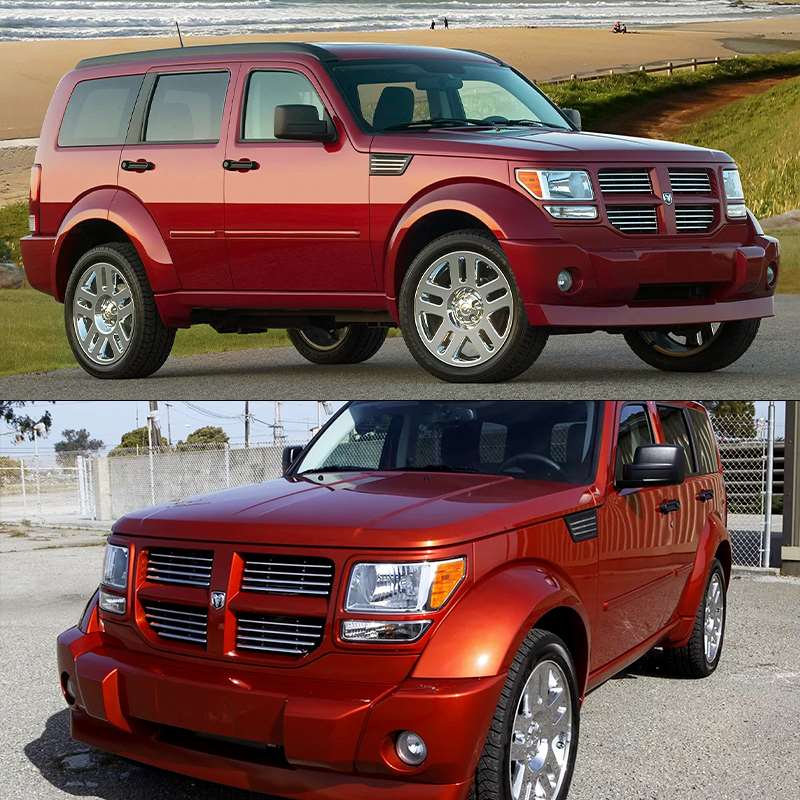
Both the IIHS and the NHTSA are in charge of determining crash safety ratings. People pay attention to the scores that these organizations give out since a driver’s safety performance might be the difference between life and death. While some automobiles breeze through their inspections, others have a lot of trouble. This category includes vehicles such as the Dodge Nitro 2011, for example.
The Nitro from 2011 was a disgrace in terms of compliance with safety regulations. Due to the fact that the automobile was especially prone to rollovers, Hot Cars ranked it as one of the most “dangerous SUVs” that was available for purchase. Fortunately, the Nitro didn’t last very long. In 2011, production came to an end, and very immediately afterward, nobody remembered this potentially lethal SUV.
Renault Fuego

When it comes to sports vehicles, the Renault Fuego was ranked among the worst by Motor1. In Europe, the first production of the Fuego began in the late 1970s, and the model was manufactured continuously up to 1986. The 15 and the 17 were both tremendously successful coupes before this car came out, and it was their spiritual successor. It did not live up to expectations.
While its contemporaries, Ford, Opel, and BMW, were developing coupes with RWD layouts, the Fuego suffered from a poor layout, depending on an inferior architecture that relied on the front-wheel drive (FWD). In addition, the Fuego was a rather sluggish automobile, despite the fact that it was promoted as a sports car in the United States.
Eagle Premier

As one of the “worst cars of all time,” according to TheStreet, the Eagle Premier is a model that many people have never heard of. Not only did the Premier make it onto this list of the top ten, but it also took the first place slot on the list. The Premier in 1989 was the lowest point in the model’s career. The Premier reportedly lacked “style” and moved slowly, as reported by TheStreet.
In reality, it was the “worst disappointing car” in the world. The Premier ranked “below average” for fuel economy, which indicates that the gas mileage was also less than optimum for the vehicle. The Premier was oversold by its marketers, and the product did not live up to the expectations set by those marketers.
Jaguar X-Type

The 2001 Jaguar X-Type is yet another contender for the title of “worst vehicles of all time. Poor platform engineering is one of the reasons the X-Type is on Time’s list of the world’s worst vehicles. The Jaguar X-Type was intended to be a premium entry-level vehicle that would compete with automobiles of a similar nature produced by Mercedes and BMW.
Unfortunately, the platform engineering of the 2001 X-Type was not up to the standards that Jaguar had set for it. Even while the automobile wasn’t terrible, it didn’t live up to the standards that “young, wealthy purchasers” were looking for. The ’01 model was described as a “tarted-up insult” to the “once-proud” Jaguar label by
Jeep Commander

There were a number of “quality difficulties” that led to the Jeep Commander’s failure to be “well-received,” even though AutoTrader feels this car should have remained on the market. The Commander was a boxier and bigger version of the Grand Cherokee, a popular Jeep model. Unfortunately, the Commander was not successful and was discontinued. After the year 2010, the business got rid of it.
Buyers most commonly had difficulties with the vehicle’s tight third row, low fuel efficiency, and inadequate load space. Other complaints included other aspects of the vehicle. People anticipated more from Jeep than what they got from this model, and the Commander did not live up to their expectations in any way, shape, or form.
Lincoln Blackwood

“Worst Car Wednesday” on MotorBiscuit featured the 2002 Lincoln Blackwood as one of the cars that made the cut. The Blackwood “flopped” on the market for a number of reasons, according to the car journal. The Blackwood was intended to be Ford’s luxury take on the F-150, which has been and continues to be one of the company’s most successful cars overall. However, the Blackwood was never produced.
The truck was generally disliked since it did not have any alternatives, delivery delays occurred, and its performance was unimpressive. While Autoblog referred to it as one of the “dumbest automobiles” of all time, Jalopnik stated that it “should have never left” the Ford factory where it was manufactured.
Pontiac Fiero

The Pontiac Fiero has been added to the list of “worst sports cars” that Motor1 has compiled. Pontiac debuted their first front-wheel-drive, mid-engined sports car, the Fiero, in the early 1980s. Even though it had good sales statistics, it was a car that had a lot of reliability issues.
The engine of the Fiero was the primary contributor to the car’s negative reception. GM sought a 1.8-liter engine with a high rpm limit, but the 2.5-liter Iron Duke was the more cost-effective choice. If you want a sports car that is light, fast, and nimble, you should go with the more expensive option. However, while having stronger performance, Fiero’s higher-trim V6 model cost $5,000 more than the base model.
Jeep Compass
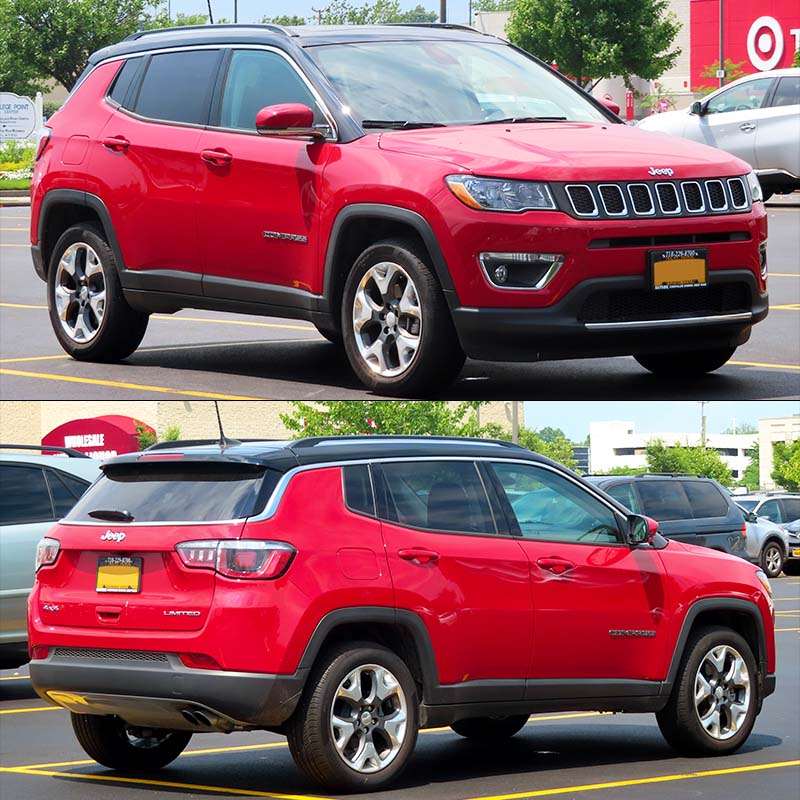
The list of 2021’s worst vehicles was just released by Consumer Reports, and Jeep is once again included on this list. The journal gave the 2021 Jeep Compass a score of 21 out of a possible 100 points, placing it solidly in the top ten of their list of the “worst automobiles of 2021.”
It was stated that there were problems with the Compass “straight from the trailhead.” The Jeep Compass is a flop because of its sluggish acceleration, lackadaisical specifications, and delayed downshifts, all of which combine with its pricing, which is more than that of its competitors. According to CR, the Compass has a fuel economy that is “par” for its class, which is another significant problem with the vehicle.
Honda Fit

The most prevalent criticism about the Honda Fit’s seats is that they’re quite uncomfortable. Fit buyers report that the seats frequently need to be repaired, costing an average of $300 to replace. According to the reviews received by MotorBiscuit, the chairs, on average, were intolerable after a distance of 2,000 miles.
Customers also self-fixed the seats by putting cushioned coverings, cushions, and other objects of a similar kind on them in an effort to make the chairs more tolerable. A couple of years’ worth of Fit models managed to avoid being criticized in this way. This may not sound as critical as “faulty brakes,” but poor seats might be a deal-breaker if you drive a lot.
Porsche Taycan

The Taycan, a new model from Porsche, was released in 2019 as a method for the company to outdo its rivals by delivering something fresh and interesting. Even while the all-electric vehicle has received a lot of positive feedback so far, there are still others who believe it is not deserving of the attention it has received — not to mention the exorbitant price tag.
Nevertheless, Porsche is doing a good job of changing people’s perceptions of electric cars, which were traditionally thought of as being cumbersome and more useful than elegant, fast, and appealing. The auto industry is undergoing significant transformation, and with the release of a new Taycan scheduled for 2022, no one can predict what the future will bring.
Saturn Aura

People complained about many things about the Saturn Aura, but the brakes were by far the biggest issue. When the now-defunct automaker produced the Aura in 2007, they did so in the vain expectation that the vehicle would pull the brand back from the verge of extinction. The company is no longer in business.
According to CarComplaints.com, Saturn was too weak of a car to achieve that goal since the website reported some significant issues with its brakes. As a result of the car’s declining safety ratings, other motorists avoid it like the plague. After those two years, General Motors ceased production of automobiles under the Saturn brand, bringing an end to the line that had been in operation since 1985.
Kia Forte

Even though Kia has had a lot of issues in the past, the firm has been able to turn things around with solid leadership and high-quality products in recent years. The Forte has higher-than-average scores on Car and Driver, which indicates that people have favorable opinions of it, but they are not over the moon about it.
One of the most significant criticisms leveled against the Kia Forte is its 2010 model, which features the most issues of any previous year’s iteration. According to Drive and Review, engine knocking is a “frequent issue” regarding the Forte. Other common complaints include troubles with lights that overheat, problems with the airbags, and poor handling.
Honda CR-Z

Honda called the CR-Z a “sport hybrid coupe,” a hybrid sports car. The vehicle had a lithium-ion battery with 144 volts and produced 130 horsepower. It had a city fuel economy of 36 miles per gallon and a highway fuel economy of 39 miles per gallon.
Even though there weren’t a lot of complaints about the CR-Z (Kelley Blue Book gave it a score of 4.5 out of 5), the model didn’t last long in the market. After a year of selling the vehicle, Honda decided to pull the plug because very few people were purchasing it. As the popularity of crossover vehicles continued to soar, it was clear that hatchbacks and small coupes would soon become obsolete in the automotive market.
Volkswagen Jetta
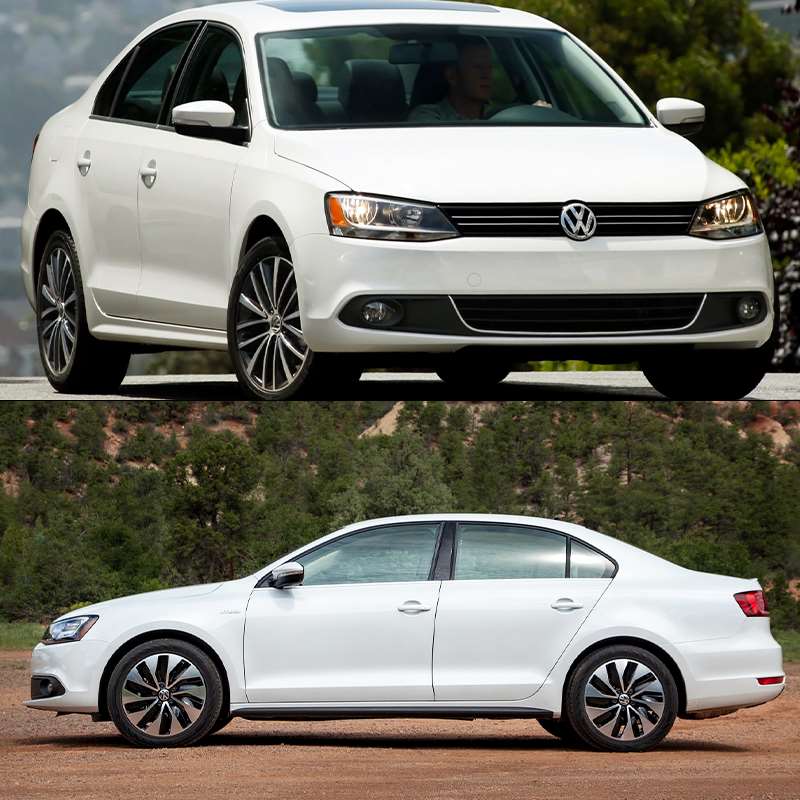
The Jetta was referred to as the “worst Volkswagen” that money can purchase by MotorBiscuit. The magazine Car and Driver claims that the vehicle is uninteresting to drive. Although the steering is very good, the Jetta lacks excitement and can be described as “boring.” The Volkswagen Jetta is notorious for having problems with its shifting, which contributes to the car’s unreliability (MotorBiscuit).
RepairPal gave the Jetta ratings less than stellar, and the website ranked it 21st out of 36 compact cars, placing it squarely in the bottom half of the competition. A further illustration of why some motorists have doubts about Volkswagen’s dependability and reliability is the Jetta. The emissions scandal that occurred a few years ago was another factor that did not help.
Nissan Altima

The 2020 Nissan Altima received a perfect score of 5/5 from Consumer Reports, making it one of the most dependable vehicles on the road today (alongside the BMW 5-series and Toyota Camry, among others). However, despite the fact that more recent models of Altimas have been successful, this does not mean that all versions are fault-free.
In addition, Consumer Reports recommended that people steer clear of the 2013 Nissan Altima like the plague. CarComplaints.com discovered that this particular model’s year was the “worst” of all the available options. It received the most complaints of any year, and the primary concern was a stalling engine, which can be extremely dangerous in some circumstances.
Chrysler 300C

There have been numerous problems with the Chrysler 300c throughout its model life, as detailed on CarParts.com. These problems include a malfunctioning electrical system, a musty odor coming from the vents, problems with the engine, a gear shift that is stuck, a power window that does not work properly, and airbag issues.
One of the models that received the most customer feedback was 2006 300, but the 2019 300c is quickly gaining ground on it. The headlights on the 2019 model have received a low rating from the IIHS, making them one of the least desirable aspects of the vehicle. The regular headlamps are not nearly as effective as the xenon ones, which are excellent if you have the financial means to purchase them.
Pontiac GTO

Once upon a time, Pontiac and Mercury were two of the most prestigious automakers in the world. This occurred many years ago, and since then, Pontiac’s fortunes have taken a sharp turn. The brands are no longer in existence, and one of the contributing factors to their demise was the ineffective management and unattractive business models they employed.
The Chrysler Crossfire was a vehicle that had a peculiar appearance. When it was finally put into production, the model looked nothing like the concept car, which featured a boat tail and an aggressive stance. The Crossfire, on the other hand, had an awkward and sloppy appearance. Although, technically, the Chrysler Crossfire wasn’t a bad car, the brand’s image suffered due to its release.
Chrysler Crossfire

Despite its strange appearance, the Chrysler Crossfire was an excellent car. When it was finally put into production, the model looked nothing like the concept car, which featured a boat tail and an aggressive stance. The Crossfire, on the other hand, had an awkward and sloppy appearance. Although the Chrysler Crossfire wasn’t a bad car, the brand’s image suffered due to its release. The vehicle was first offered in the form of a coupe.
Despite the fact that it performed quite similarly to the Mercedes SLK, it was never able to achieve the same level of popularity as that car. In the end, Chrysler decided to stop accepting orders for the Crossfire because sales were falling, and there was already an excess of stock.
Jeep Compass

The Jeep Compass is still on the road today! With a starting MSRP of $26,020, the 2022 model has a 6/10 rating on Car and Driver. If the newer model is good or bad is yet to be seen, but one model deserves a warning label. According to CarParts.com, the suspension system on the 2007 Compass has a slew of problems.
Control arm/bushing and tie rods, in particular, are prone to failure, with the former being the most frequently reported issue on CarComplaints.com’s forums. This issue has been reported by Compass owners at a mileage of 58,000 miles, which isn’t a lot for a problem of this nature.
Dodge Caliber

Even though it had a lot of problems, the Dodge Caliber, which was a compact car, received a rating that was higher than average from a number of consumer publications. Some areas of the reliability rating were affected by a large number of complaints from owners. According to CarParts.com, a large number of people have experienced issues with their automobiles.
A wide range of problems was reported, such as issues with the engine, water leaks, bad suspension components, and transmission problems. When compared to other Dodge models, the Caliber’s production run was relatively short. Since it was discontinued in 2012, it had only been in production for five years.
Chrysler Sebring

The Sebring ranks 18th in Chrysler’s lineup of eighteen models in terms of reliability (ChryslerProblems.com). When it comes to this vehicle, it has been a struggle for those who own a Sebring. More than 1,500 complaints have been filed about the vehicle, which spans a total of sixteen model years.
In addition, HotCars.com mentioned that the Sebring is an expensive vehicle to maintain, particularly due to the aforementioned problems. Customers have complained of “endless” transmission problems, including trouble starting their cars on a regular basis. Nothing is more frustrating than a car that won’t start, so it’s understandable that Chrysler decided to retire the model in 2010.
Nissan Murano CrossCabriolet

Described by Bloomberg as a “strange, ugly car,” the Nissan Murano CrossCabriolet is one of the weirdest vehicles of the 21st century. In the end, it was just a short-lived experiment by Nissan. Somewhat of a chimera, the CrossCabriolet. Nissan created a new type of sport utility vehicle by grafting the roof of a convertible sports car onto the chassis of a sport utility vehicle.
The odd thing was that the car had seating for four people, but it seemed completely out of place. Although there were no significant problems with the vehicle’s dependability, consumers were not prepared for the unconventional styling of the vehicle.
Subaru Ascent

The current model of the Subaru Ascent is a three-row, eight-passenger vehicle that has a 6/10 rating on Car and Driver. While MotorTrend and Kelley Blue Book gave it somewhat better ratings, the numbers don’t lie, as far as a recent Consumer Reports analysis goes. CR analyzed a lot of new cars to find the ones with the most issues. The 2022 Subaru Ascent was one of ten cars that had the most significant change of problems.
And that’s not all—in 2019, Subaru recalled the 2019 Ascent because of transmission issues and the potential for engine failure. They also issued a recall for the Ascent because the driveshaft bolts loosened. Amazingly, Subaru is still making this vehicle, considering they haven’t put the issues to rest.
Chrysler Pacifica

For reliability, ChryslerProblems.com ranks the Chrysler Pacifica 16th out of 18 vehicles, and the website found that complaints about the vehicle span nine different model years. The 2021 Pacifica is one of the most heavily criticized model years. Twenty-two Edmunds reviewers say this car, which was built in 2020, has numerous quality-control issues.
The 2022 Pacifica received a reliability rating of 63 points out of a possible 100 from J.D. Power, which indicates that things aren’t going so well for this model year either. In terms of reliability, a score of 63 is considered “Fair,” which, despite its name, indicates a level that is “Below Average.”
Tesla Model Y

If anything, the much-heralded Tesla Model Y should have done better in the survey. It would appear that Elon Musk’s electric vehicle, the Model Y, is not as reliable as it could be given the rating of two out of five that it received from Consumer Reports. This rating indicates that Model Y’s reliability is below average. Consumer Reports ranks the Model Y as the ninth most reliable SUV on their list of the top ten most reliable SUVs.
According to CNET, the Y is “almost great,” but it does not quite make the cut because it has a “flawed” design. The site described the active safety suite as being “fundamentally” impaired, and this is the primary problem with the product. The Y was rated 6.7 out of 10 by CNET.
Volkswagen Tiguan
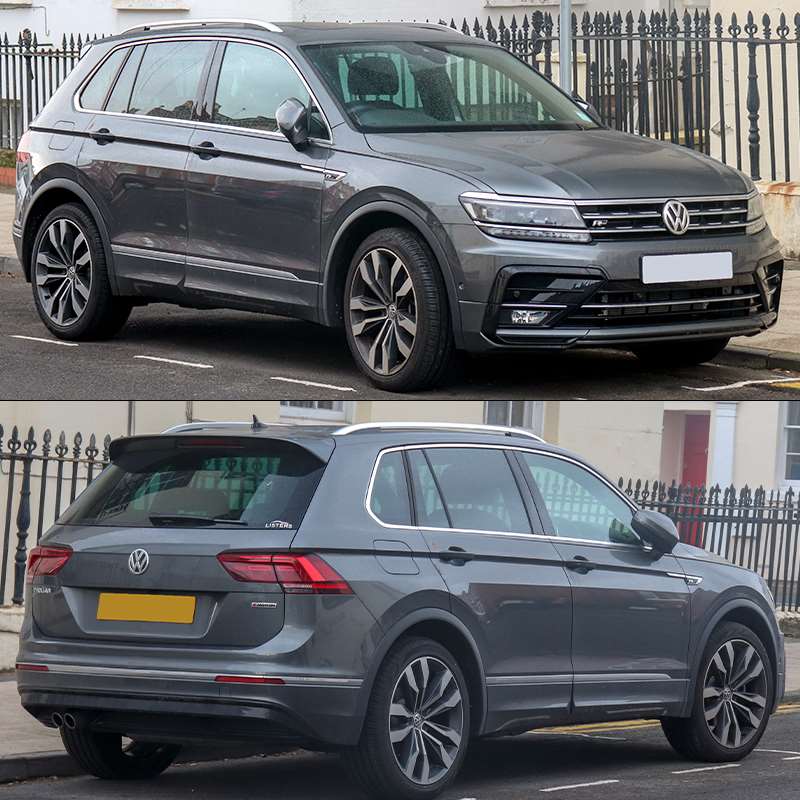
In terms of overall quality, the 2011 Volkswagen Tiguan is one of the worst model years. The Tiguan has been on the market for over a decade and has received mixed reliability ratings during that time. The more recent models have fared better than their predecessors (like the 2011). Reliability is described as “average” by Engine Patrol. The 2011 Tiguan, on the other hand, falls short of those standards due to numerous customer complaints.
CarComplaints.com found that the timing chain was the most frequently cited problem. Even more recent models have their drawbacks, as evidenced by the fact that U.S. News discovered that the Volkswagen Tiguan had poor ratings for its fuel economy and a third row that was too small and inconveniently positioned.
GMC Sierra 1500

According to GM Authority, the GMC Sierra 1500 has a number of serious problems. The truck’s “major engine issues” could necessitate either a replacement or a rebuild, both of which are extremely expensive. This model’s engine replacement costs between $5,000 and $10,000.
Additionally, GM used leaky air conditioners for many trucks and SUVs from 2014 to 2017; the condenser leaking is one of these issues. Other people have had issues with the terrible headlights and the Takata airbags. In February of 2021, 5.9 million vehicles were recalled because of potentially dangerous airbags; certain model years of the Sierra were included in this recall.
Dodge Nitro
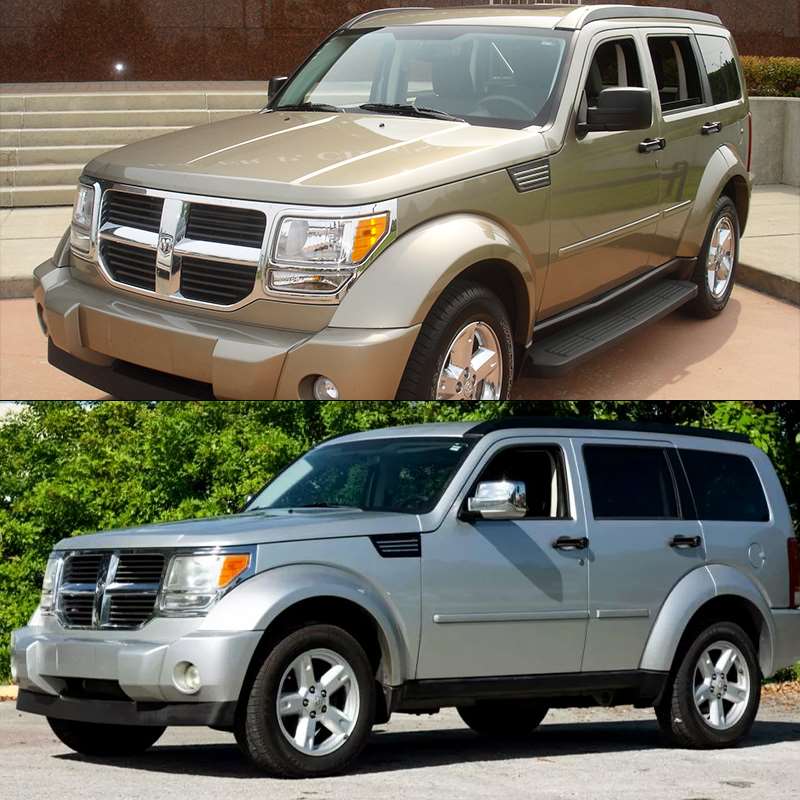
In terms of daily driving, the Dodge Nitro is a solid option, but it’s not without its drawbacks: (CarParts.com). These issues include an engine that won’t start, faulty door locks, loose steering wheels, defective key systems, transmission problems, and a stuck back door.
The Nitro was manufactured from 2007 until 2012, and its gas mileage isn’t all that impressive: 16 miles per gallon in the city and 22 miles per gallon on the highway. Another issue is its odd, boxy, cubed appearance, which takes some getting used to. After a model run of five years, Dodge discontinued the Nitro and introduced a new version of the Hornet in its place.
Ford Explorer

For the Ford Explorer’s success, it’s easy to see why it was so popular. It was fun and functional for families of all sizes, thanks to its combination of sporty styling and high-tech features. Ford’s SUV lineup now includes it as standard equipment, with a high-level trim level available for the Explorer as well.
The years of the Explorer were filled with highs and lows. Specifically, the 2002 model is dubbed the “most problematic” by MotorBiscuit, who says to stay away from them between 2002 and 2006. Transmission failure, slippage, and shifting issues plagued the 2002 Explorer. There were numerous reports from owners who said their transmission problems persisted even after an initial fix.
Chevrolet Silverado

WheelsJoint.com found that one of the most common ailments of the Chevy Silverado was the air conditioning system. The causes behind that failure ranged from a dirty filter to a refrigerant leak. Or, the blower motor of the compressor could have just been bad. The Silverado’s compressor is another often-cited issue that drivers have with the vehicle.
CoPilotSearch.com recommends that people avoid buying used Silverados from the years 2012 to 2019, as they are the most glitch-prone. Even 2020 isn’t perfect, as WVDot.com said that hard shifting, downshifting issues, and jerking are still present, though not as bad as earlier models.
Pontiac Aztek

Among the worst cars ever, according to HotCars.com, is the Aztek. To touch the Aztek would be like touching a “10-foot pole,” as it was a complete and total disaster on all levels. Despite the car’s obscene exterior, neither the interior nor the engine was up to snuff. The Aztek’s transmission, rear visibility, and engine all lacked refinement (MotorTrend.com).
Despite the Aztec’s cool features, such as a removable cooler, sliding cargo floor, and rear stereo controls, the disadvantages outweighed the advantages. This model from Pontiac, which is no longer in production, came in at number twelve on the website’s list of the most reliable vehicles.
BMW 7-series

Despite how much you may have yearned to be the proud owner of a luxury vehicle of this caliber, MotorBiscuit recommends that you “never” purchase a 7-Series from BMW. When you buy a new 7-series, there are a lot of issues, according to iSeeCars. According to BreakerYard.com, the 7-series is plagued by engine stutters, low oil pressures, blurry cameras, issues with the air conditioning, and electric windows.
7-series repair and maintenance costs are expected to be $14,453 for the first ten years of use (CarEdge.com). This is nearly $2,800 more than the industry average. Your 7-series has a 40.39 percent chance of requiring major (and expensive) repairs during the first ten years of ownership.
Chevrolet SSR

In terms of American automobiles, the Chevy SSR is an example of one of the brand’s most glaring missteps. First and foremost, the Super Sport Roadster was an oddity. Only a person with an unusual sense of style could look past the SSR’s bizarre blend of pickup truck and sports car.
When all of the optional extras were considered, the price of the cumbersome, unwieldy, and sluggish pickup truck could climb as high as $50,000. Another factor contributing to its failure was the car’s exorbitant price tag. Before it was even available to the public, the SSR was subjected to a great deal of hype, but it did not live up to those expectations in any way.
Renault Vel Satis

The Renault Vel Satis was named one of the “worst cars ever” by Oxford Mail. The French automaker launched the executive car in 2001, and it became famous for being the car that the then-President of France used to travel around in. For all intents and purposes, the Vel Satis production model was nothing like the concept car.
The failure of the Vel Satis was deemed “comical” by RAC. It had a rough ride, and there were recurring problems, such as the handbrake failing. According to reviewers, the car’s handling was rough and noisy and the V6 engine was also slow. The ride was a shuddering disaster if it wasn’t being driven on a smooth, glassy surface.
Fisker Karma
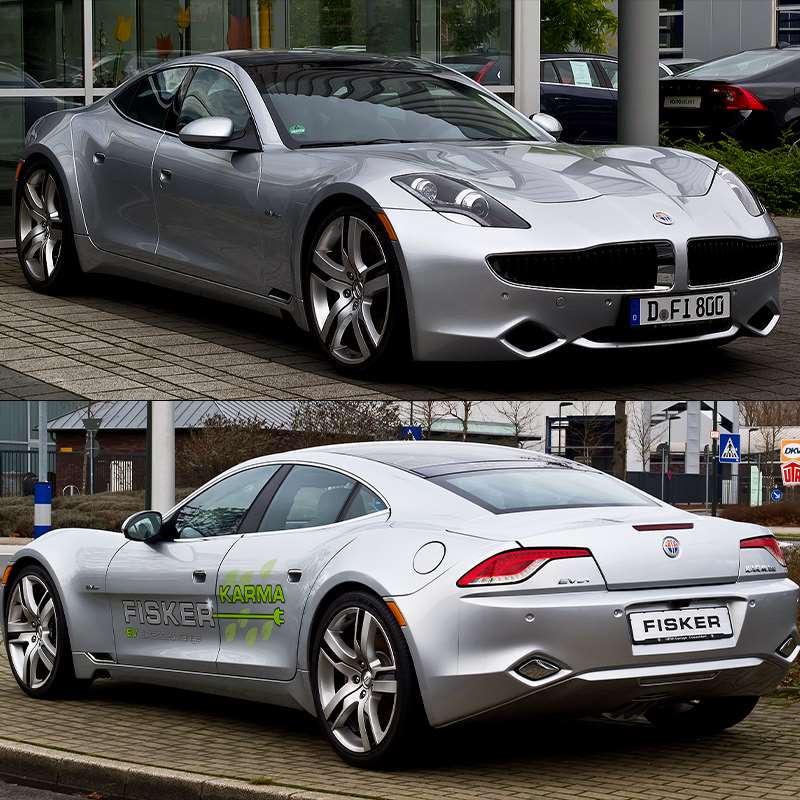
Despite the fact that celebrities like Justin Bieber drove Fisker Karmas, they were a complete failure. Consumer Reports found that the sleek Karma was susceptible to the same “training regimen” problems as any other vehicle. Two of this car’s biggest “cons” were its poor performance and cramped interior.
After A123 Systems, the Karma’s battery supplier, filed for Chapter 11 bankruptcy in November of 2012, the Karma was discontinued all of a sudden, albeit only temporarily. Nearly 2,500 Karmas were manufactured in total by Fisker, of which approximately 2,000 were sold across the world. Despite the fact that the company has made a comeback, Bloomberg says that the newer models, such as the Revero, are “very bad.”
Hoffman

As a pioneering and futuristic automobile, the Hoffman was built in 1951. Unfortunately, things did not turn out the way they were supposed to, and as a result, it ended up being dubbed “the worst car in the world.” But what exactly is it about this car that everyone despises?
Due to the fact that the Hoffman has only three wheels, it is a very risky vehicle, and there is a greater likelihood that it would topple over. Because of the way it was constructed, getting in or out of it is not exactly a comfortable experience. If that wasn’t disturbing enough, the engine has a really loud rumble to it… And to tell you the truth, the whole aesthetic is not particularly appealing. There is no question in anyone’s mind that The Hoffman is deserving of the moniker of “worst car in the world.”
Chevrolet Colorado

The “most problematic” model years of the Chevy Colorado, according to CoPilot Search, are 2004, 2005, 2015, and 2016. Because it is generally agreed that the model year 2015 is the least desirable of the bunch, a particular focus has been placed on it. The 2015 Colorado had “severe” engine and transmission difficulties even at modest mileage.
Some 2018 Colorados also experienced gearbox issues, resulting in the pickup vibrating or shuddering when driven at high speeds. If you take good care of it and have it regularly serviced, you can anticipate your Colorado to last between 200,000 and 300,000 miles, although the exact number will vary depending on your model year. Colorado’s greatest years are the most recent, according to Carfax.
Jeep Wrangler
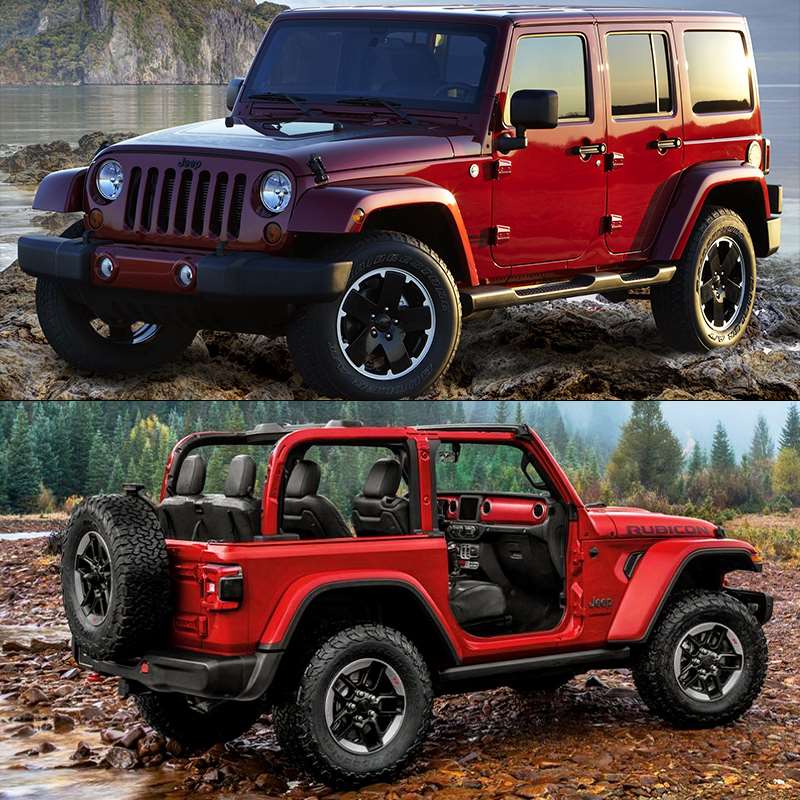
According to Motor Biscuit, the 2012 Jeep Wrangler is undeniably the worst. The issues came on at low mileage ranges, and this pointed to a manufacturer issue, as opposed to a wear-and-tear one. There were also claims that the 2008 Wrangler had problems as well, though not as extensive as the 2012 model.
Though the Wrangler often has a reputation as a great off-roading vehicle, Motor Biscuit said that it is the “worst Jeep.” One of the most common complaints about the Wrangler, no matter the year, is that it is very noisy, especially in the interior. Their reliability rating on RepairPal is 3.5/5.
Dodge Charger
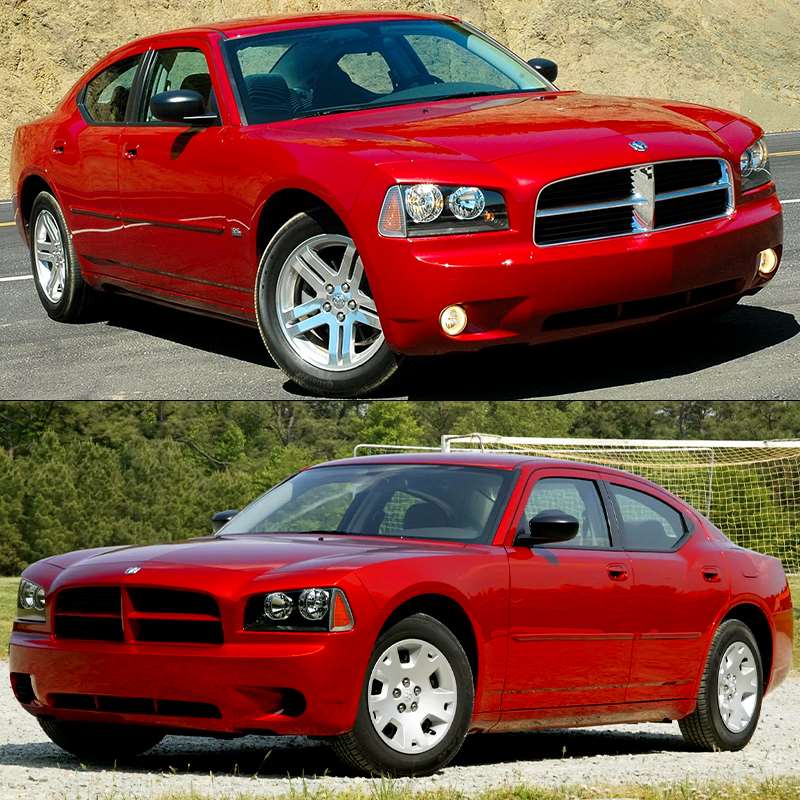
Early engine failure is the most common complaint among Charger owners, according to CoPilot Search. The Charger is a snazzy muscle automobile that is immensely well-liked all over the world, despite the fact that it isn’t completely problem-free. CP also claims that problems with the Charger’s powertrain, suspension, and accessories are “quite prevalent.”
Despite the fact that J.D. Power only awarded the Charger an overall two out of five for “dependability,” it appears that the model year 2006 is the one with the most problems. Because of this low rating, drivers have a greater chance of experiencing problems that call for a skilled mechanic’s attention (typically highly expensive).
Hyundai Nexo

The Hyundai Nexo is a hydrogen fuel cell-powered crossover SUV. At the Consumer Electronics Show in 2018, it was first shown to anyone who could be interested in purchasing it. The Nexo has a range of 354–380 miles and an EPA estimated fuel economy of 65–58 miles per gallon. The average cost to refill the tank is close to one hundred dollars.
According to Consumer Reports, the newspaper was unable to even purchase the Nexo for the purpose of conducting a “formal test” because of its limited availability and the fact that it was only marketed in the metropolitan areas of California. If you’re looking for convenience and a low-cost refuel, the Nexo may not be the right automobile for you.
Volkswagen Beetle

For all of its flaws, the Volkswagen Beetle has always been praised for its dependability. Repair Pal places it at number 24 out of 36 on the list of vehicles in its class, giving it a rating of four out of five stars and placing it in the bottom half of the compact car category. The average cost of repairs for this vehicle is $612, which indicates that its overall ownership expenditures are approximately average.
According to Car Problems, the years 2001, 2004, and 2005 were the worst for Volkswagen Beetles since they were plagued by a wide variety of electrical issues. The latest models, according to MotorAsk, are “the most reliable,” yet Vehicle History gave the Beetle a 3 out of 5.
Maserati Ghibli
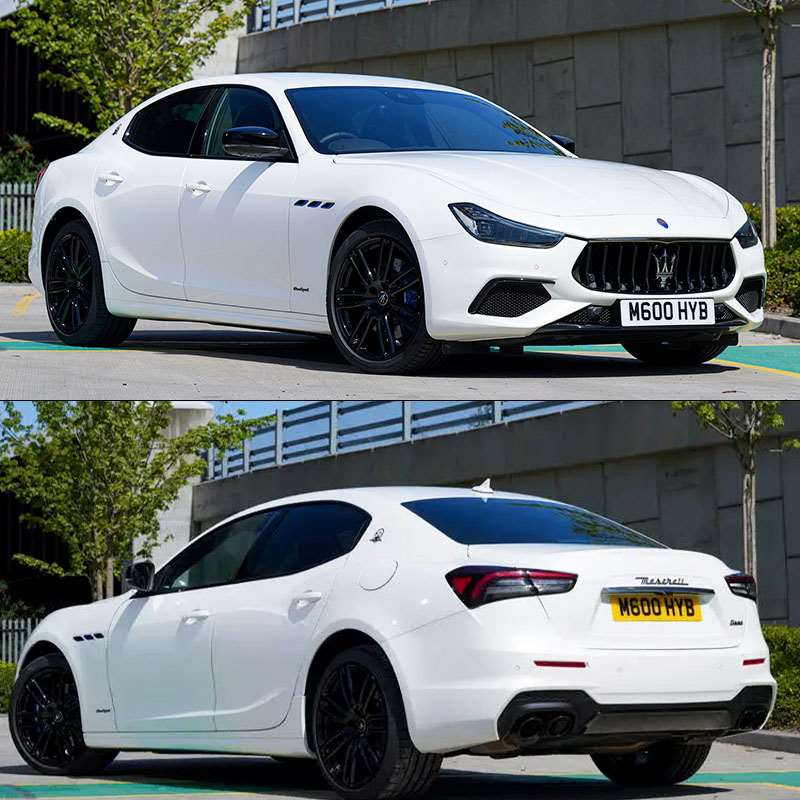
It has been suggested by the publication Motor Biscuit that the Maserati Ghibli is the “worst car you can purchase.” A vehicle that costs as much as the Audi A7 or BMW 560i should be of great quality. Many reviewers, on the other hand, claim otherwise.
According to OSV, the “elite brand,” Maserati has never been especially “dependable.” This is not a problem limited to the Ghibli. Maserati’s reliability suffers because it lacks the mass production capability of its competitors. In addition, because of their limited availability, Maserati automobiles are expensive to maintain and repair, and it might take a long time to track down replacement parts.
Buick Regal

General Motors (GM) decided to terminate the Buick Regal in the first three quarters of 2019 after witnessing the model’s sales fall by 20 percent. Because of Regal’s long history of poor sales performance, General Motors decided to discontinue production of the vehicle in the year 2020.
You should steer clear of the fifth-generation Regal, according to Buick Problems’ discomfort ranking (2009-2017). The Regal ranks are ninth on the Buick model list on the website. In the medium car category, RepairPal scored 13th out of 24. GM has continued to sell the car in China despite the fact that there is no 2021 Buick Regal available in North America. However, the Chinese version of the automobile features a distinct body style.
Chevrolet Trax

Chevy Trax isn’t strictly “terrible,” but it is “impossible to take seriously” because of its “underwhelming” design, according to the review in Hot Cars. Even by the Trax’s “class standards,” U.S. News considered the Chevrolet Trax to be “boring to drive” and stated that the publication shared the ennui felt by consumers, noting that the Trax was “simply OK.”
The Trax received a 3/5 for dependability from the newspaper. Although tiny SUVs are becoming more and more popular, the Trax looks to have fallen short of expectations. The National Highway Traffic Safety Administration (NHTSA) has also received concerns concerning the vehicle’s brakes, electrical systems, steering, and suspension.
Kia Cadenza

By discontinuing the Cadenza and the K900 in 2021, Kia will have only one model left in production: the $38,000 2020 model. The Cadenza was released in 2010, and throughout its ten-year existence, it was generally regarded favorably by critics. Exception made for the model year 2014.
According to Car Complaints, the Kia Cadenza from 2014 is the model with the “worst” reputation overall. Serious issues included there not being daytime running lights, there not being a cooled driver’s seat, and there being an excessive amount of “play” in the wheel. The Cadenza had a reliability rating of 17 out of 24 on Kia Complaints, putting it in the bottom half of the brand’s lineup.
Tesla Model S

Elon Musk’s Tesla Model S, which Consumer Reports has expressed a lot of concern about, was rated virtually “dead-last” on its reliability list, according to SFGate. Consumer Reports found problems with the air conditioning and heat pumps, in addition to panels that were misaligned, which is a problem that is very well-known with Tesla vehicles.
C.R. gave the Model X a reliability rating of 5 out of a possible 100 points. The expense of maintaining a Tesla is another disadvantage of having one. CarEdge estimates that the total cost of ownership for a Model X over a period of five years will be an average of $61,506. This comprises the price of fuel, maintenance, finance fees, insurance, and depreciation of the vehicle.
Ford Mustang II
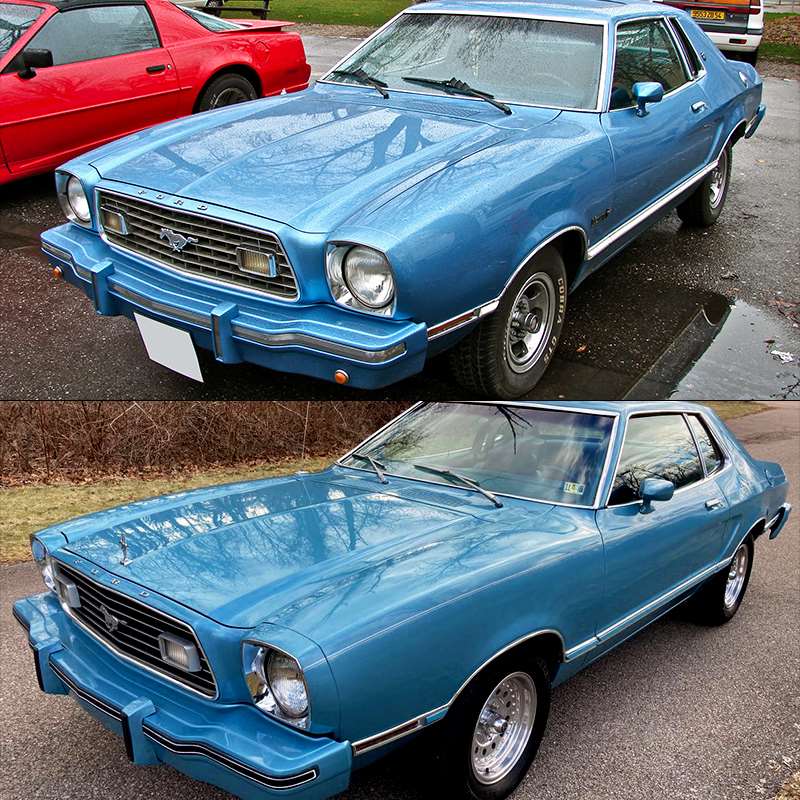
In the words of MotorTrend, the Ford Mustang II was a “miserable sports vehicle.” When one considers that the Mustang brand is often regarded as a prime illustration of authentic American muscle, it should come as no surprise that the Ford Mustang II is widely regarded as one of the most reviled iterations of the Mustang.
People in the 1970s ridiculed the pony for its awkward and unsightly appearance, as well as its short wheelbase, which made it look ridiculous in comparison to its competitor, the Chevrolet Camaro. Even though a V8 model became available in the middle of the 1970s, it did not have a particularly impressive performance. Its speed in the quarter-mile was 78 miles per hour.
Nissan Stanza

From 1973 until 1992, Nissan Stanzas were sold in the United States under the Datsun 510 nameplate. The Washington Post referred to the Stanza as an “ugly automobile” that was “bereft of personality,” hence the publication supported the decision to replace it with the Altima. The Washington Post also believed that the replacement was a smart move.
According to Ethan Tufts, a YouTuber from the channel @HelloRoad, the Stanza is a “strange, ancient automobile.” It is up to you to determine why you would want to buy such an ugly vehicle, but Edmunds reports that you can get one used for between $348 and $1,541. The latter models of the Stanza are simpler to find, despite the fact that they are relatively more expensive.
So, what does this all mean for you? Well, it means that if you’re in the market for a used car, you need to be extra vigilant. Do your research and know what to look out for when inspecting a potential purchase. If you’re not confident in your ability to spot these red flags, take the car to a mechanic for an inspection – it could save you from making a costly mistake. Are there any other tips or tricks that our readers use when shopping for cars? Let us know in the comments below!







